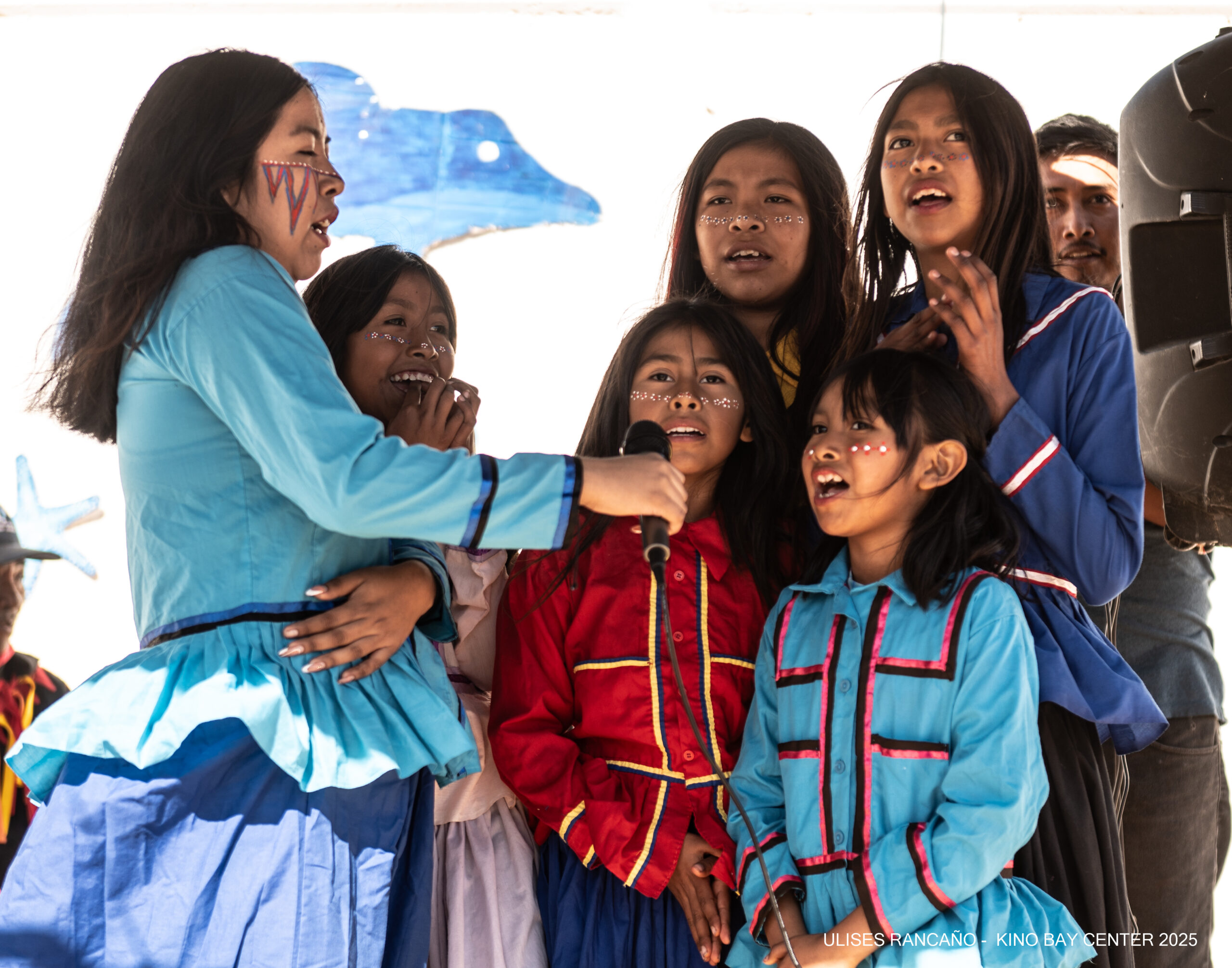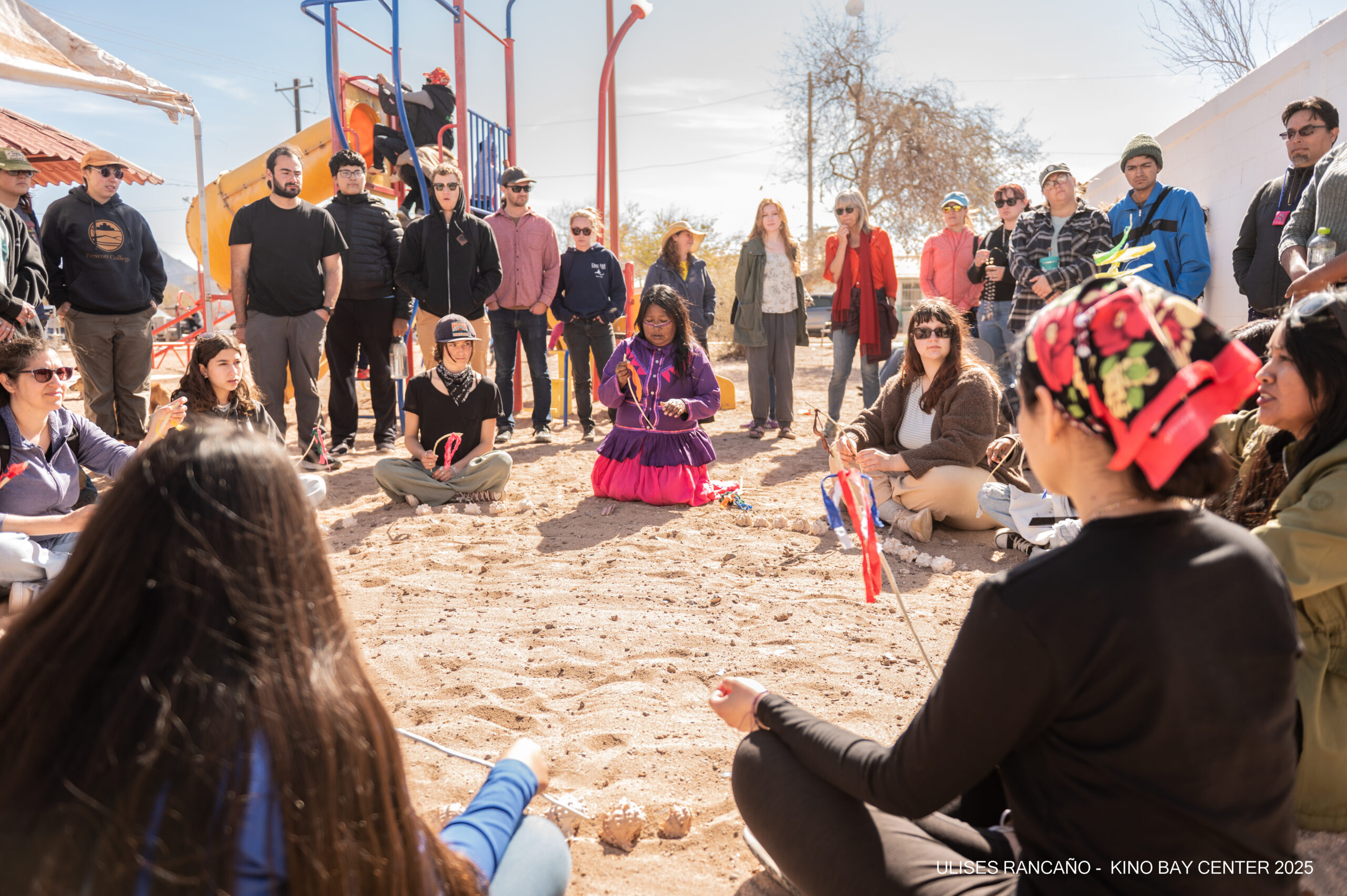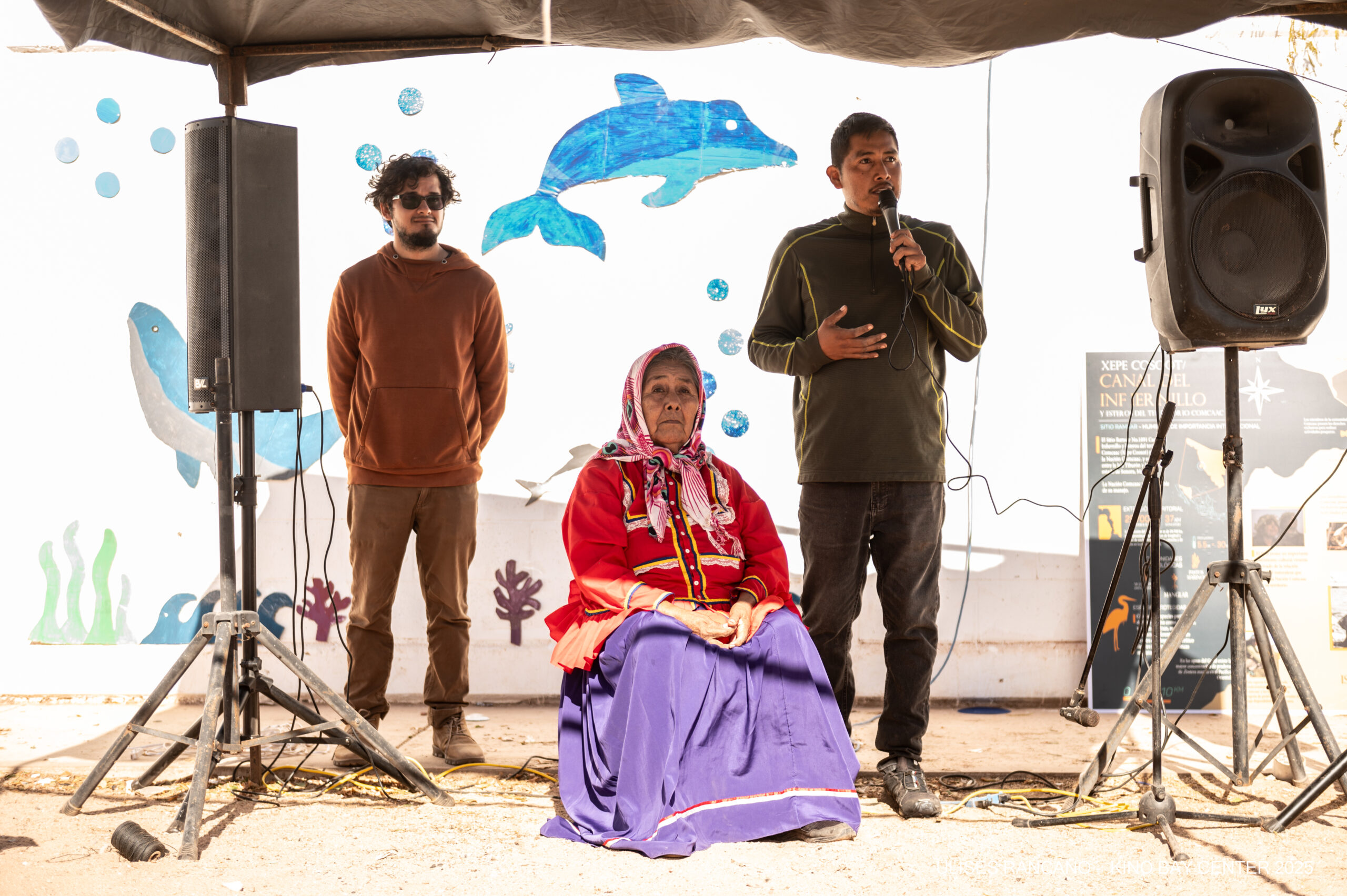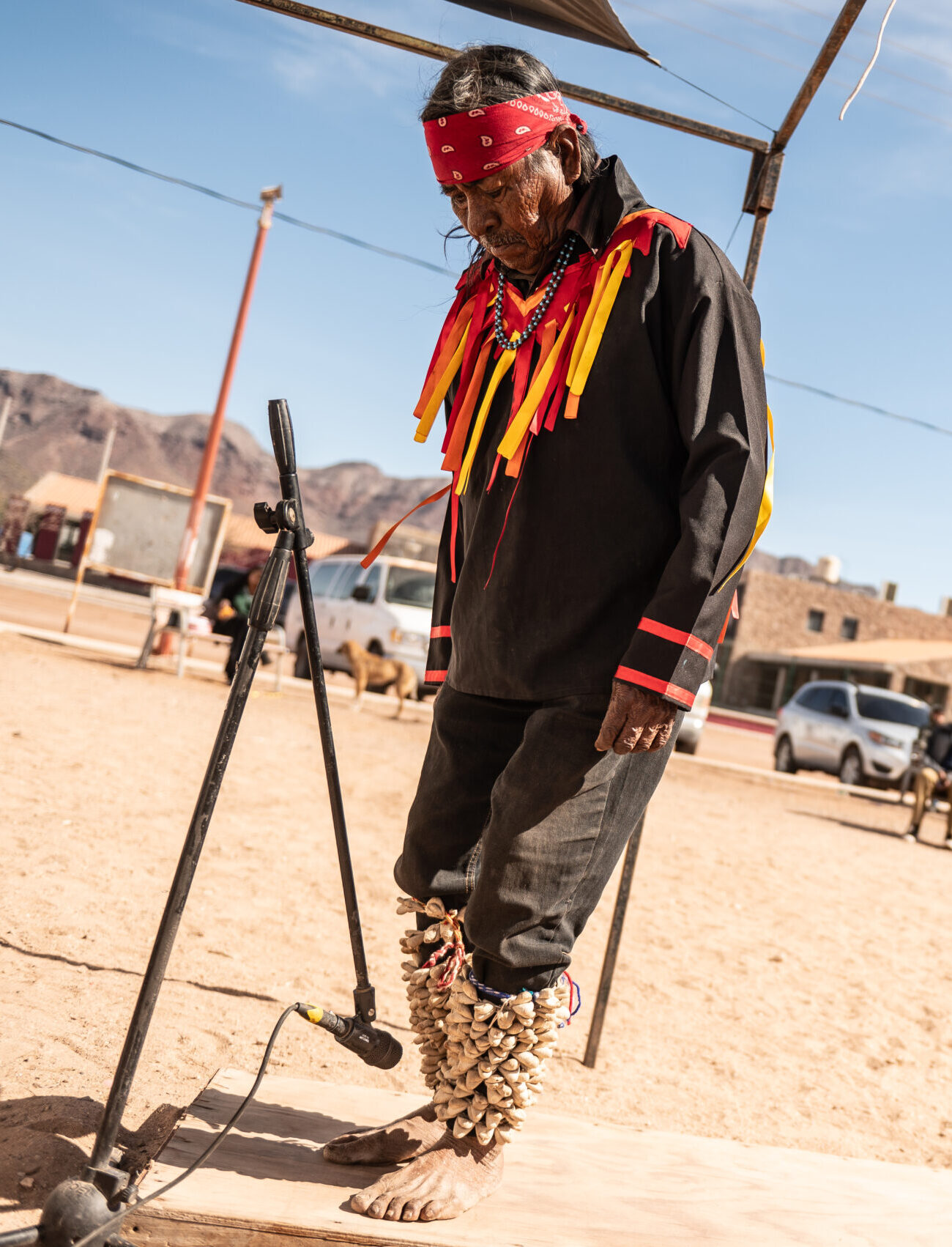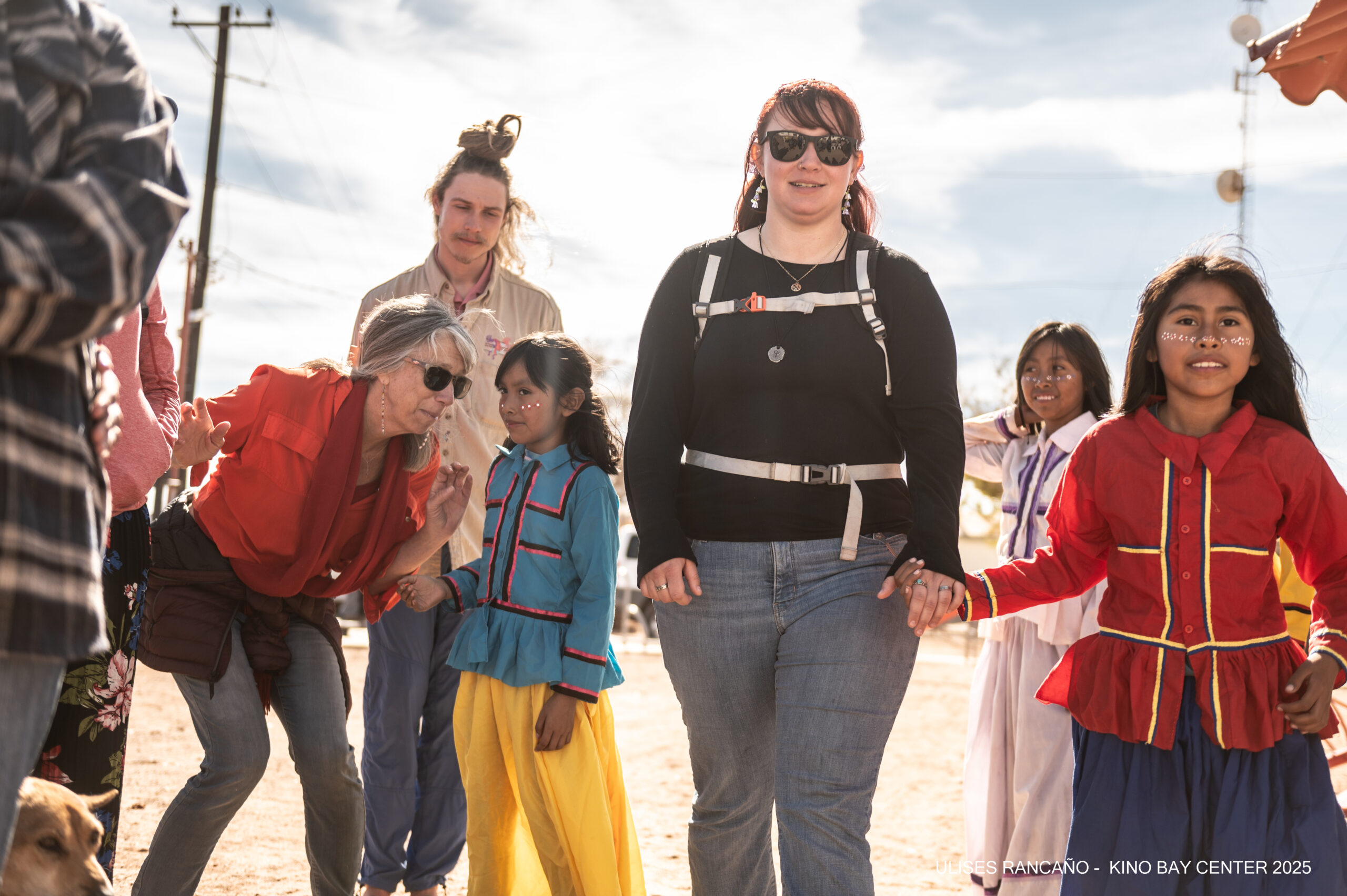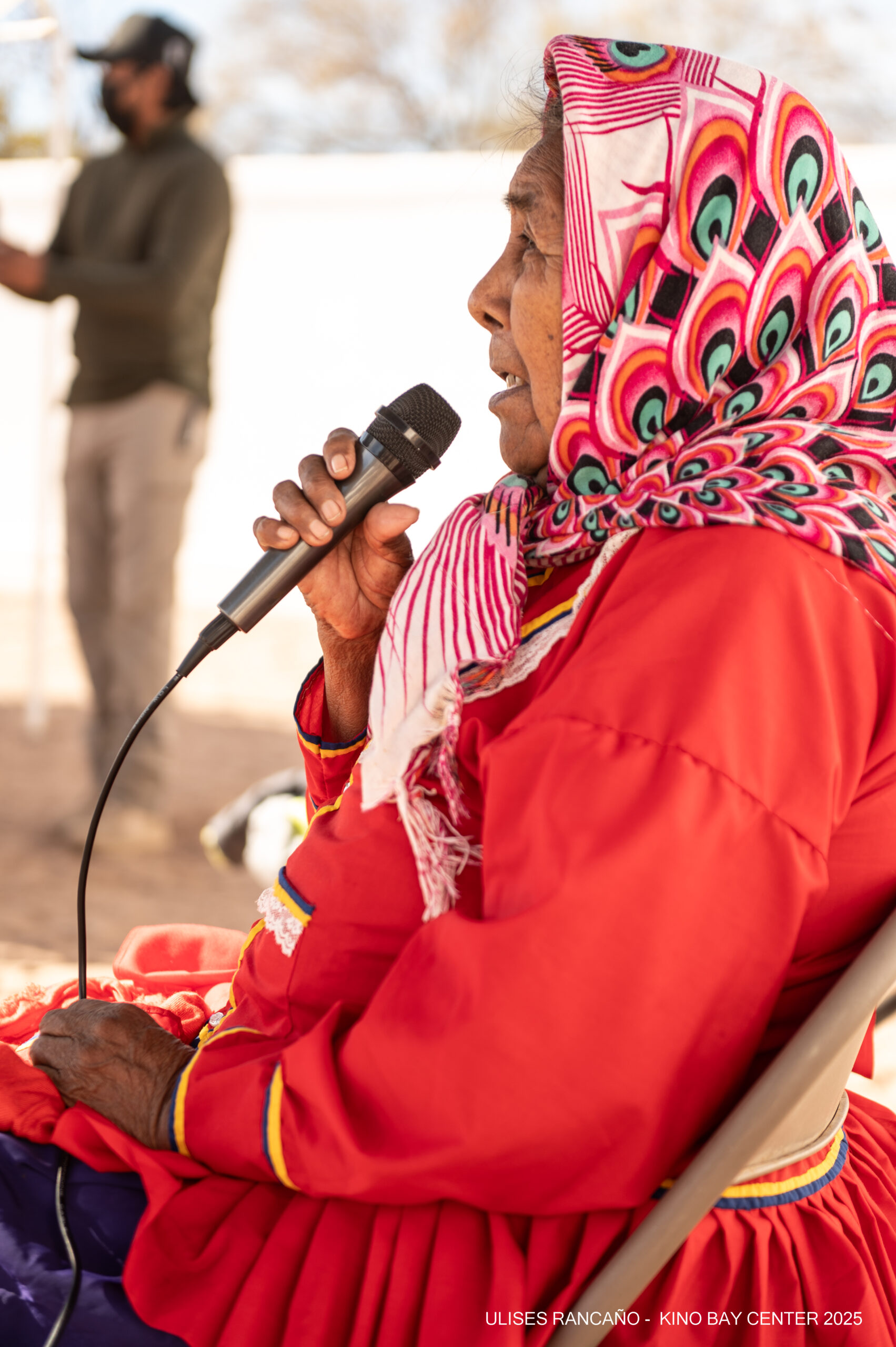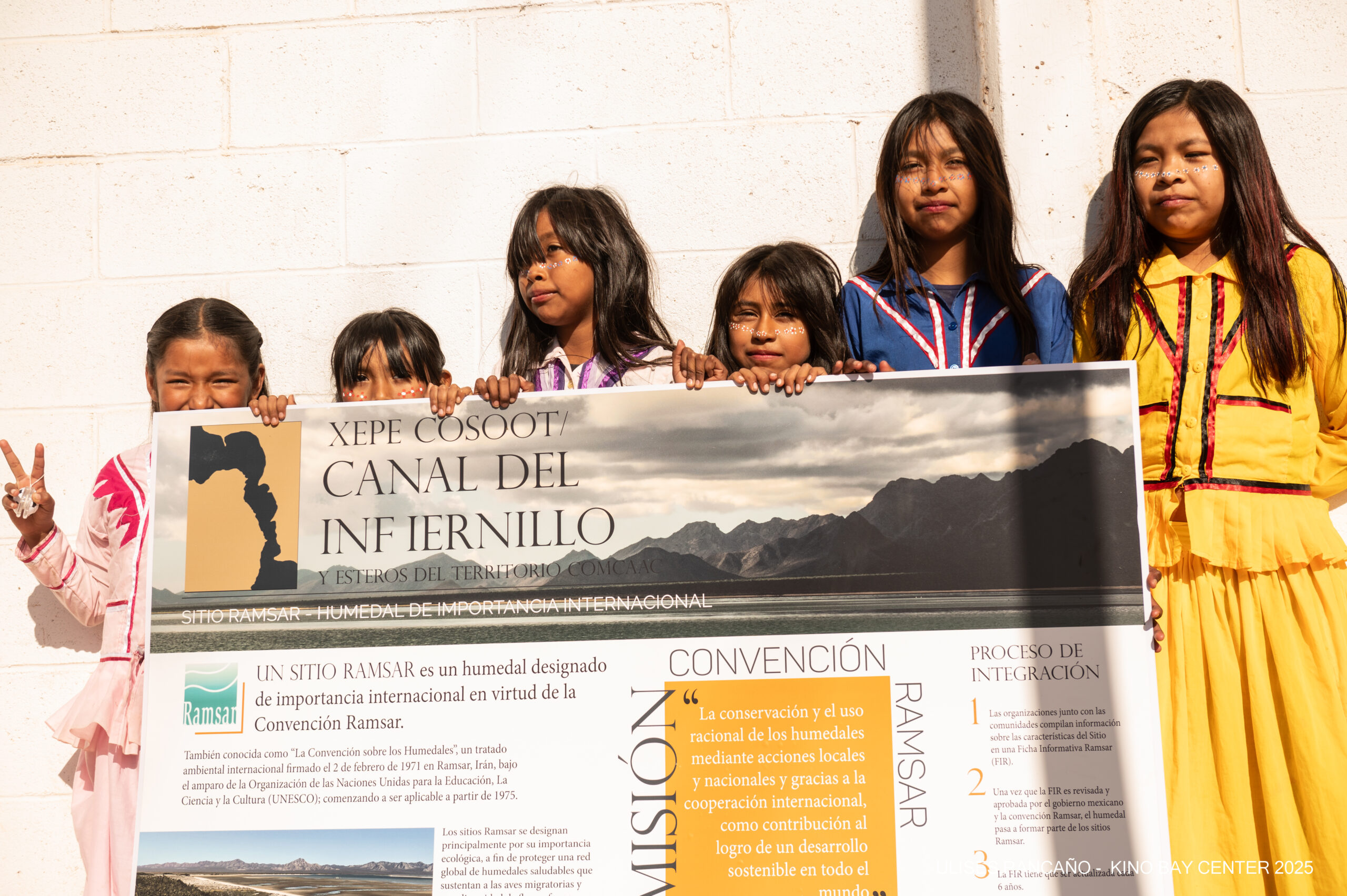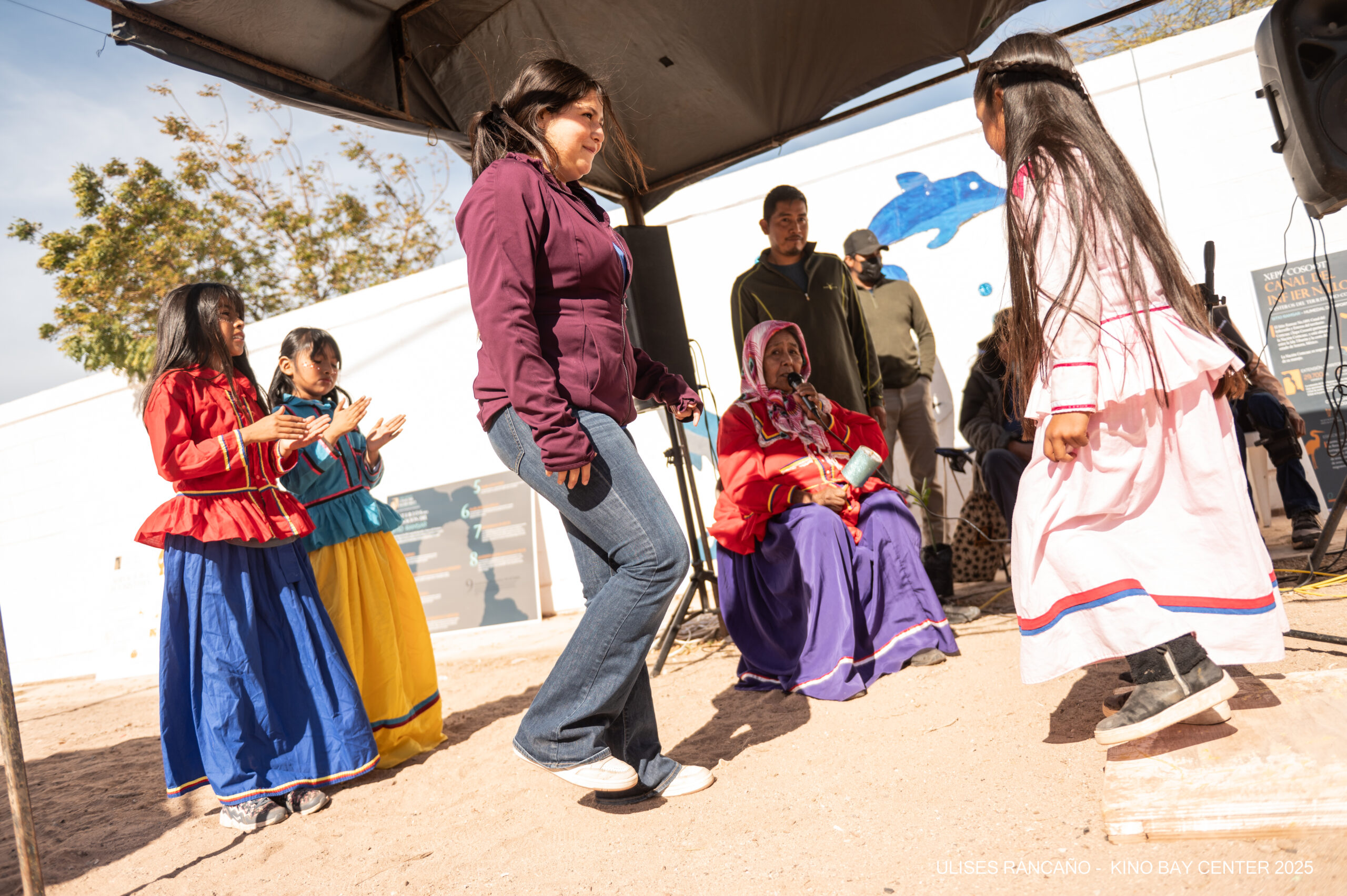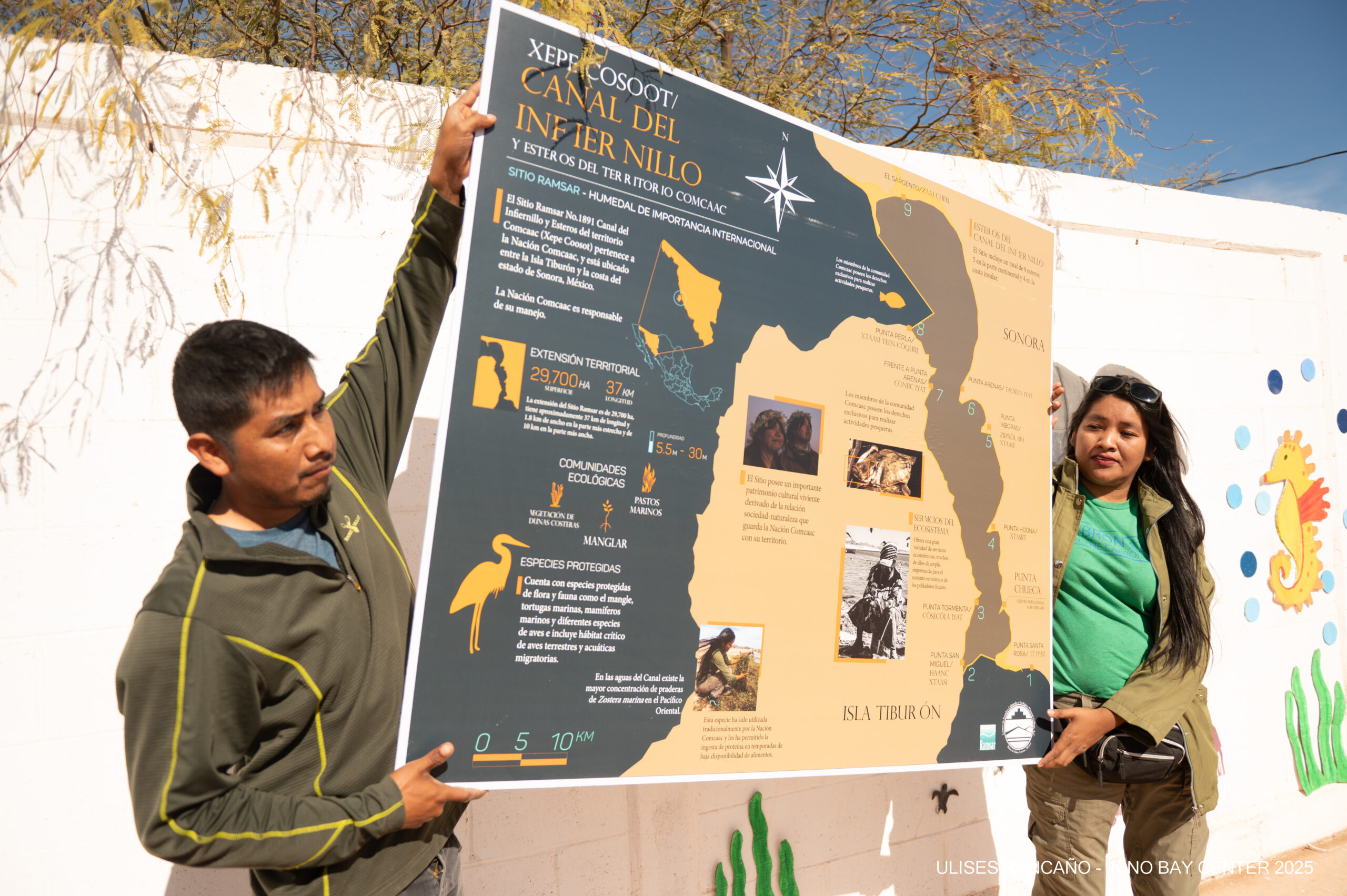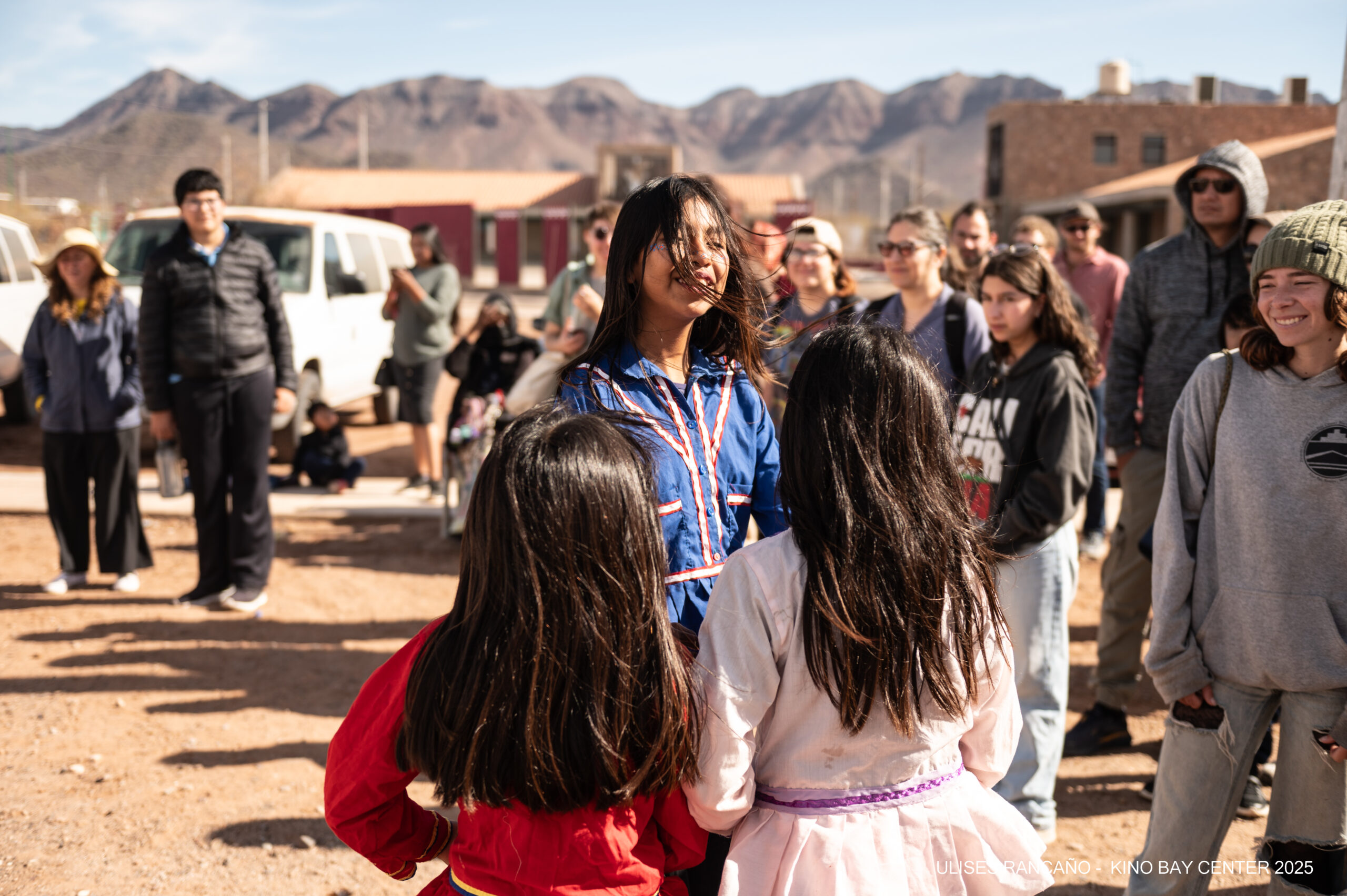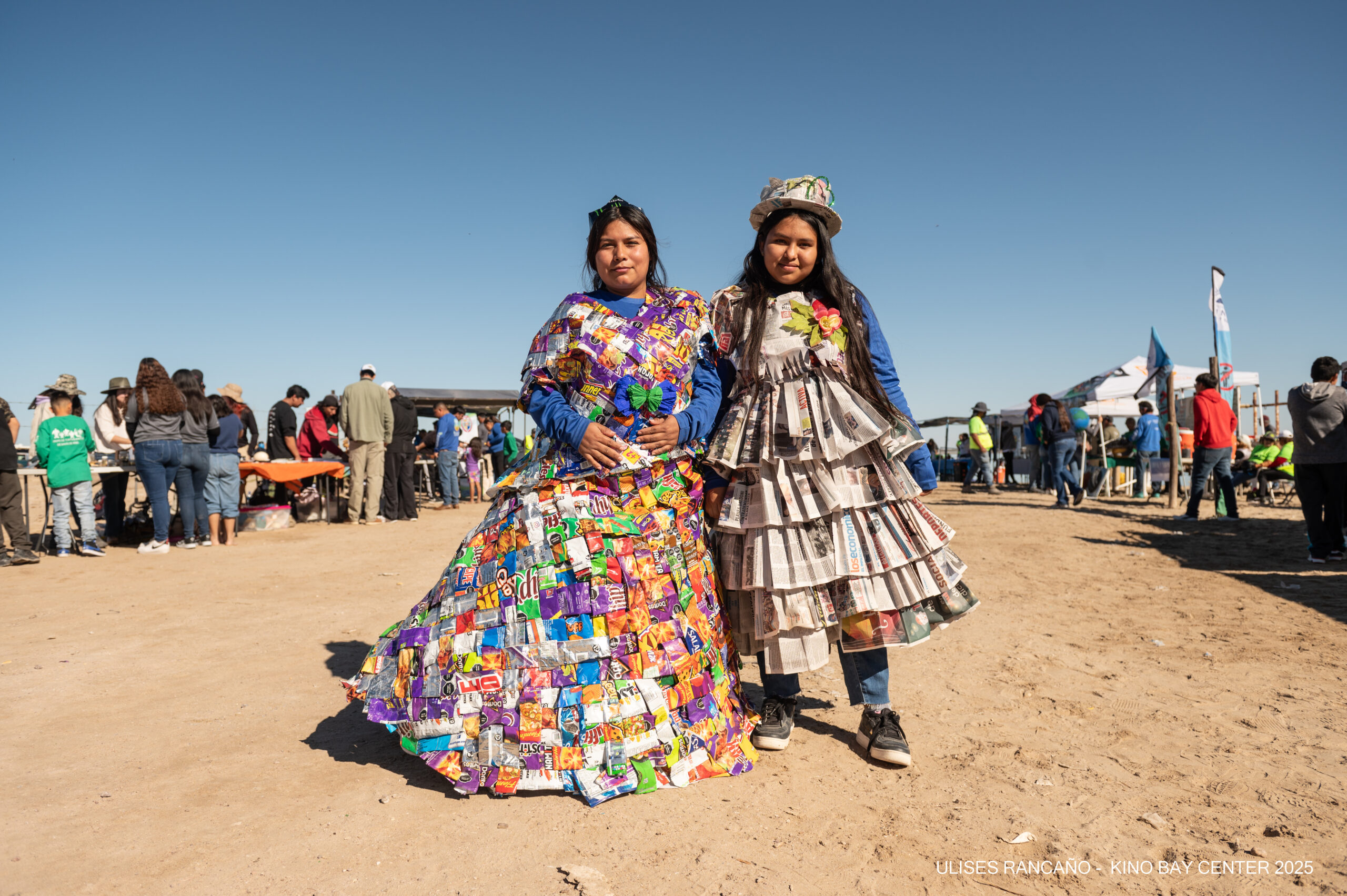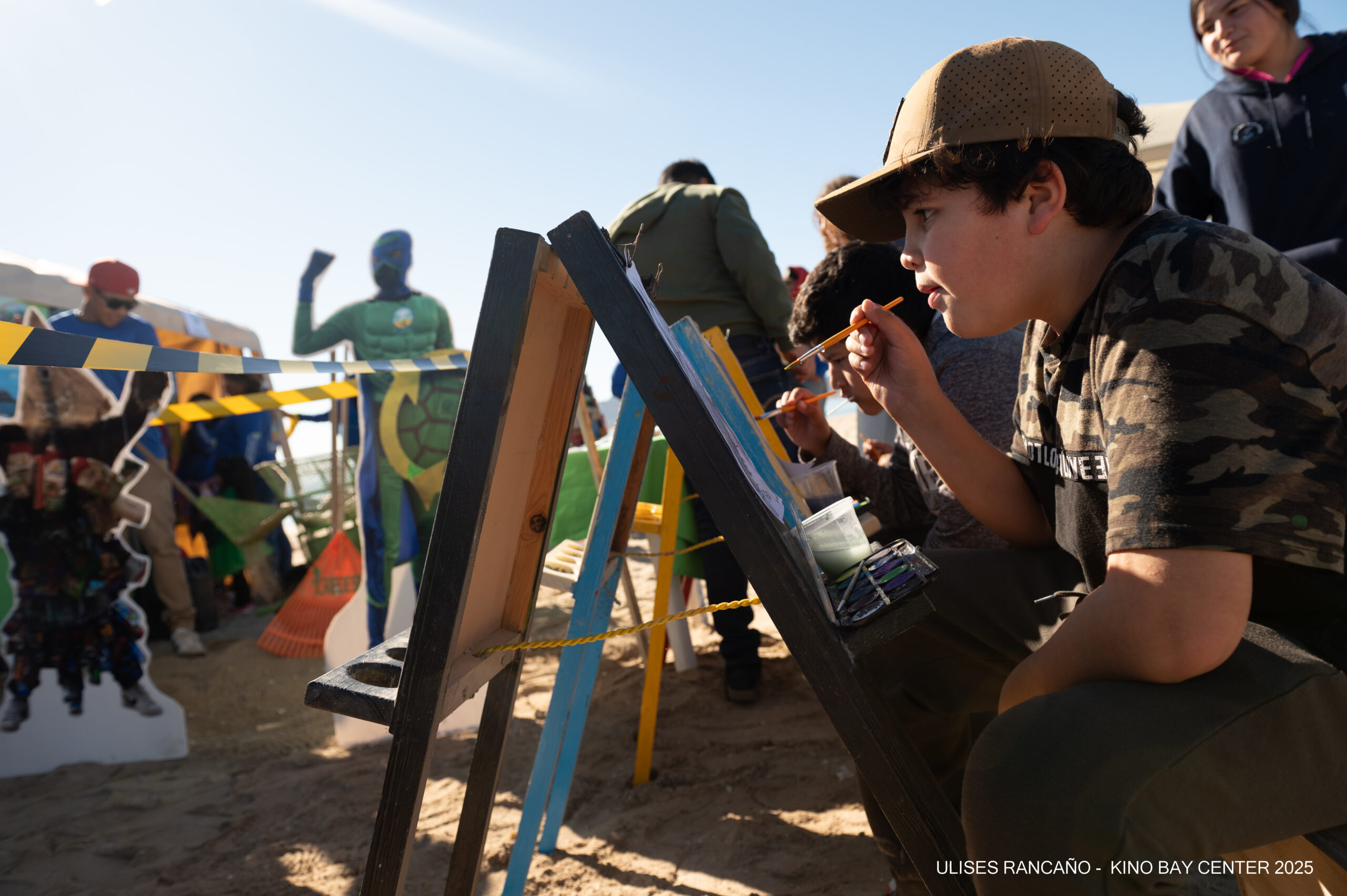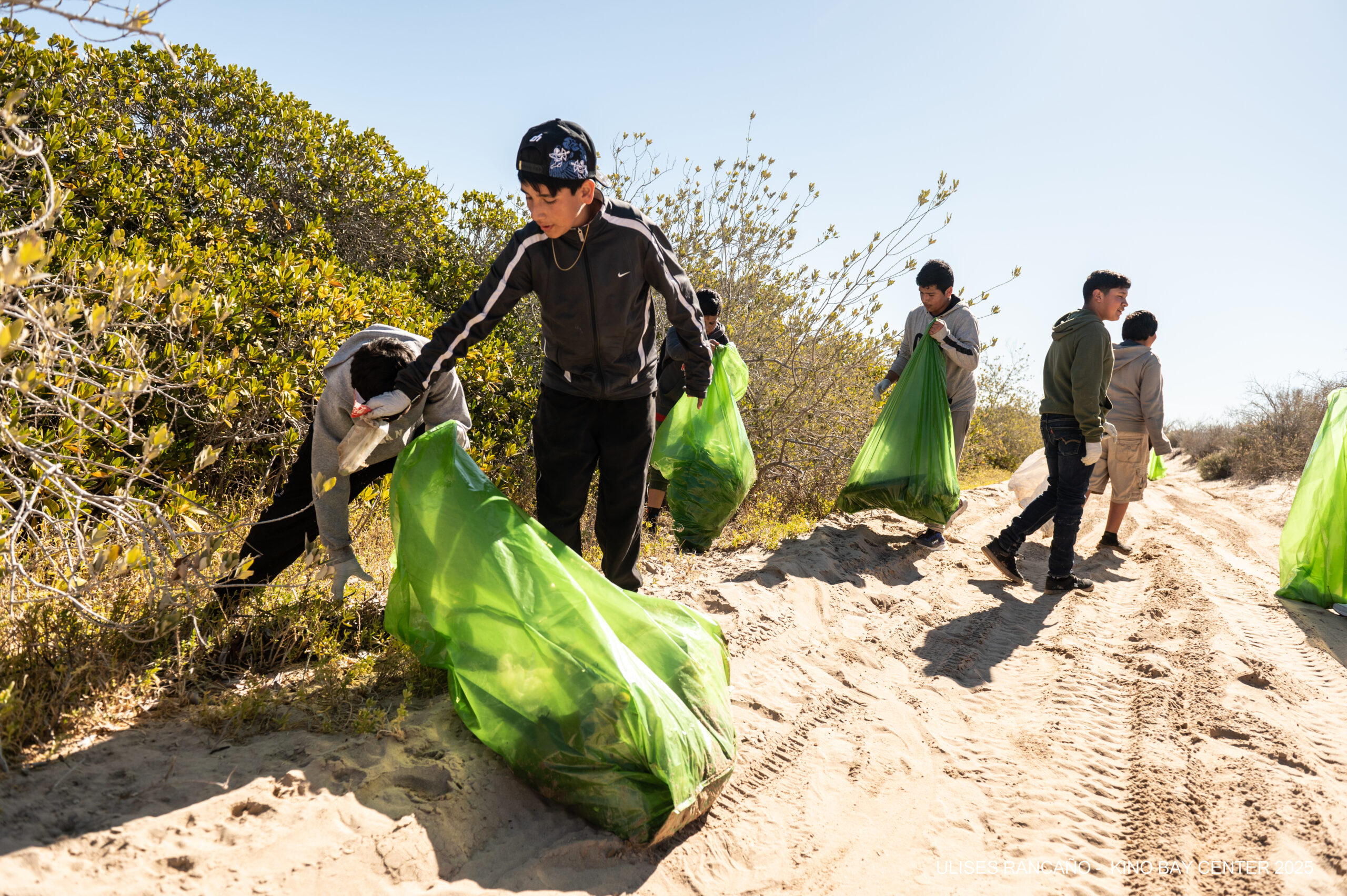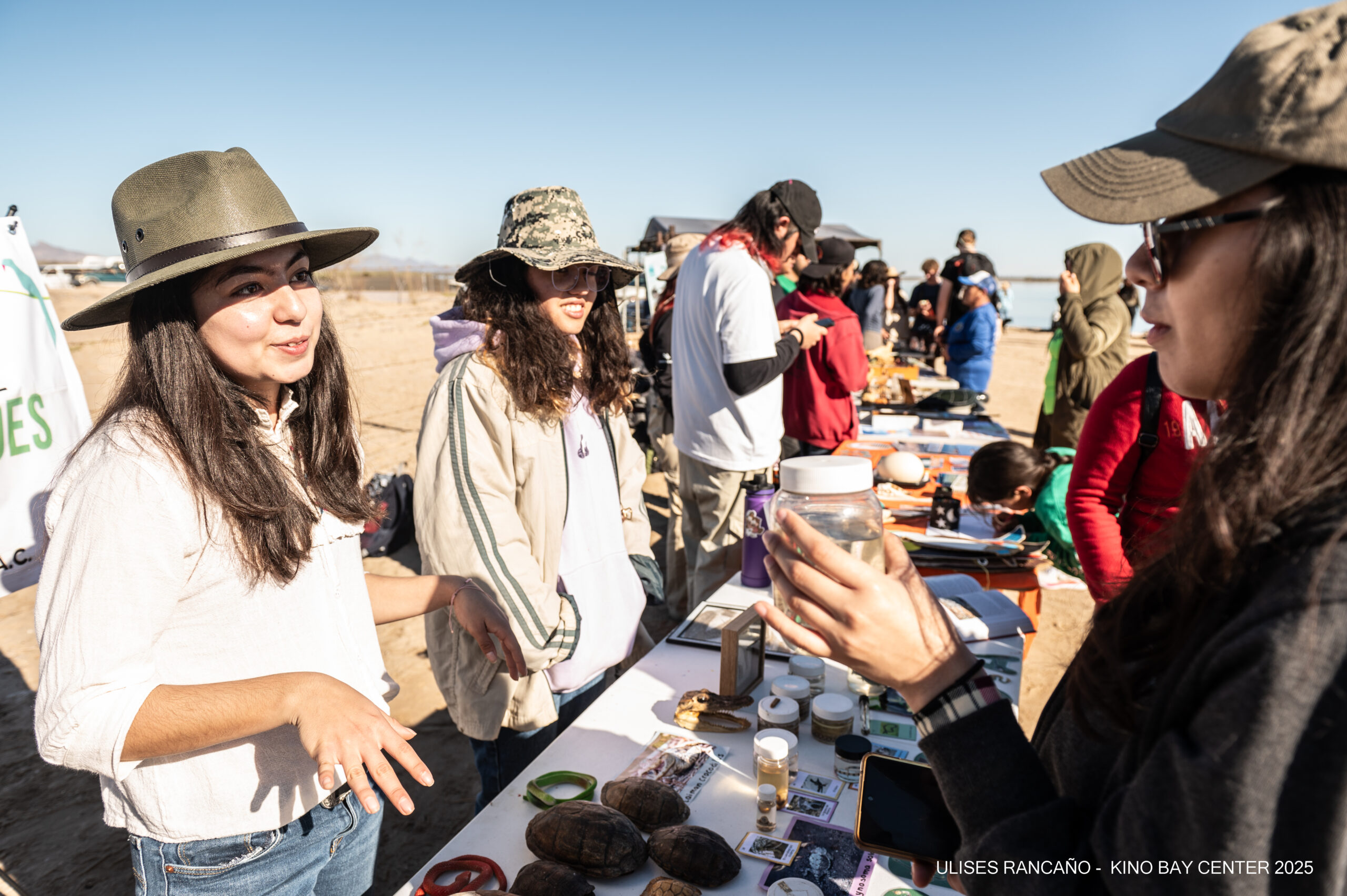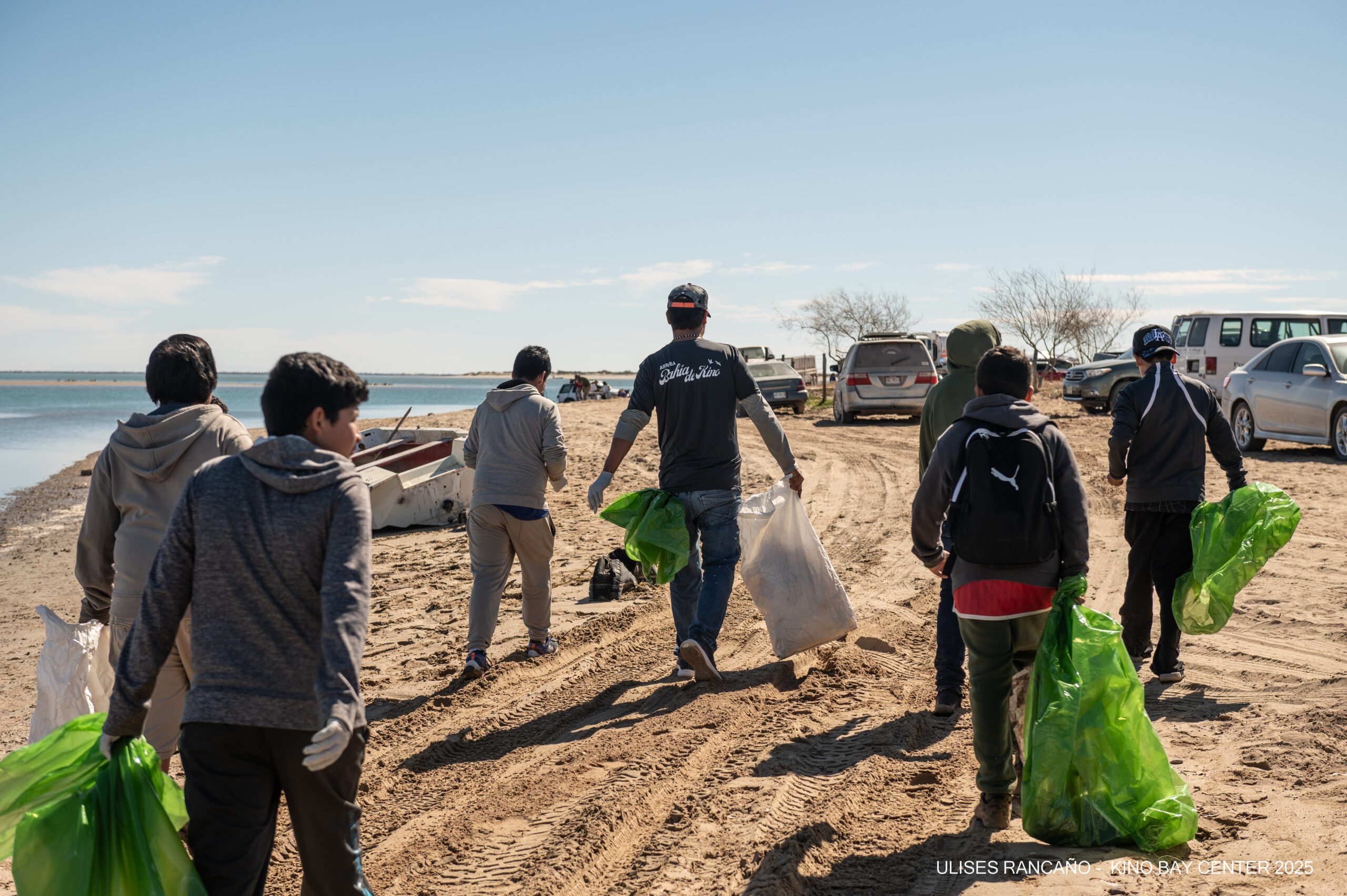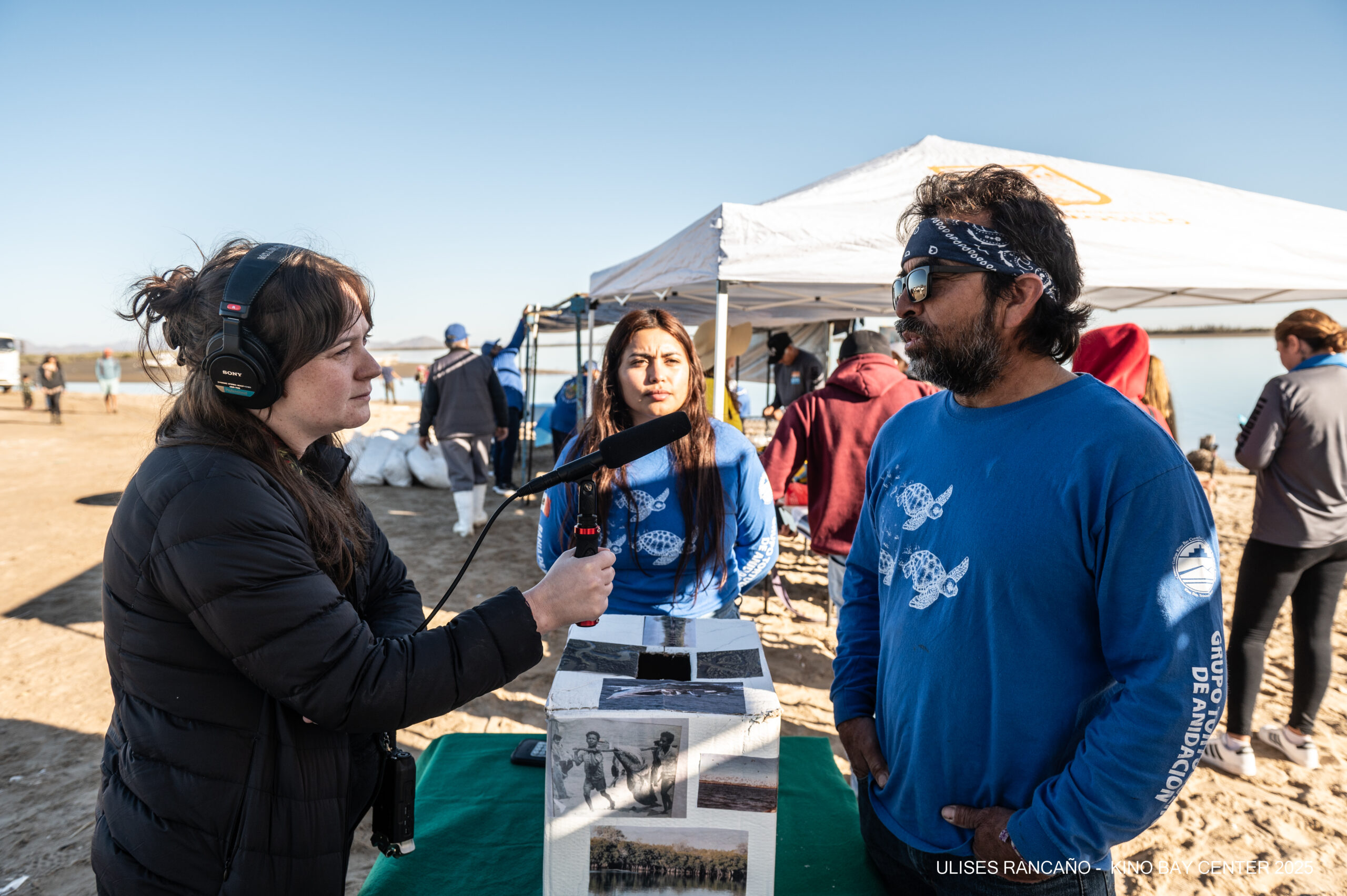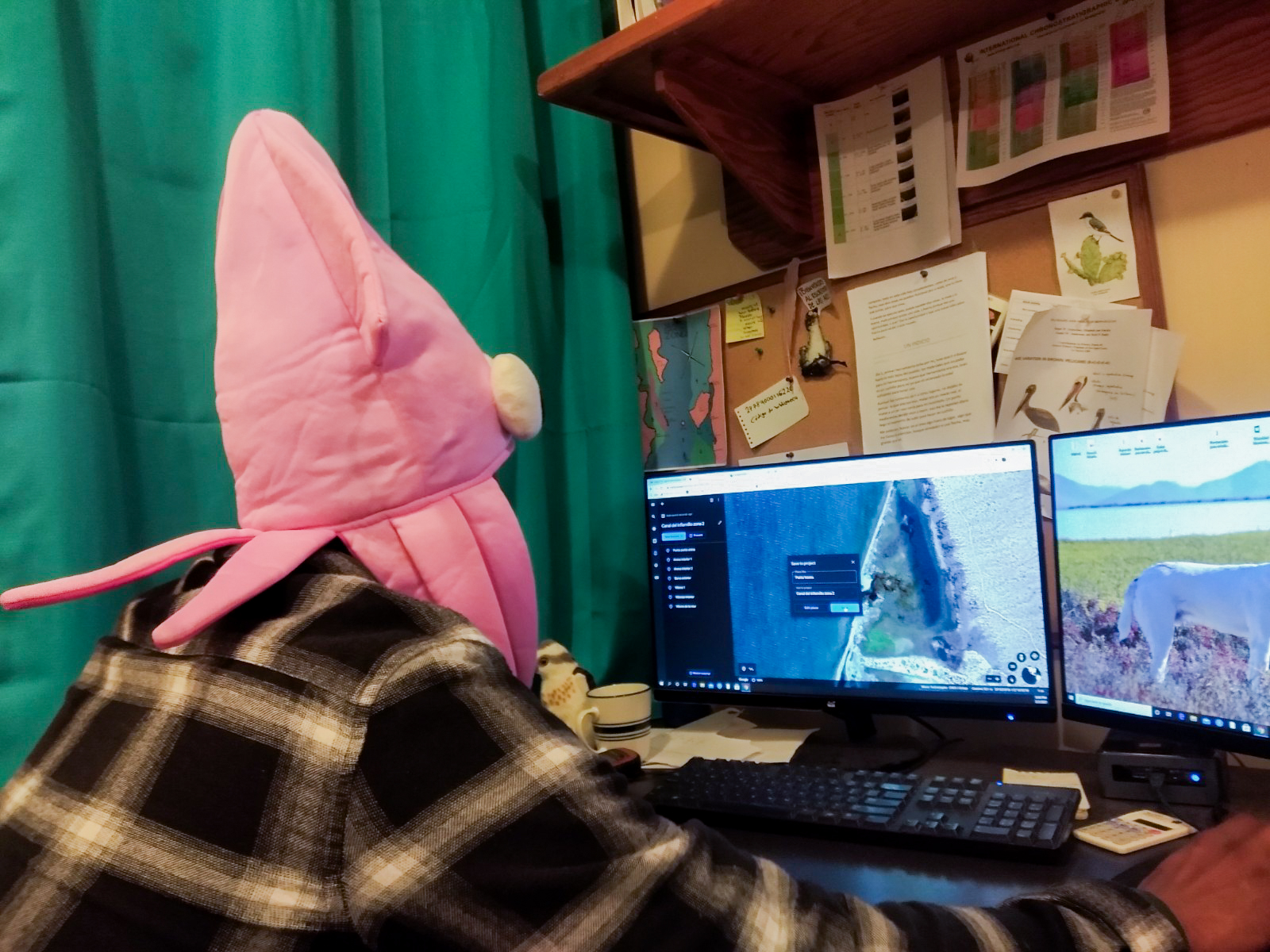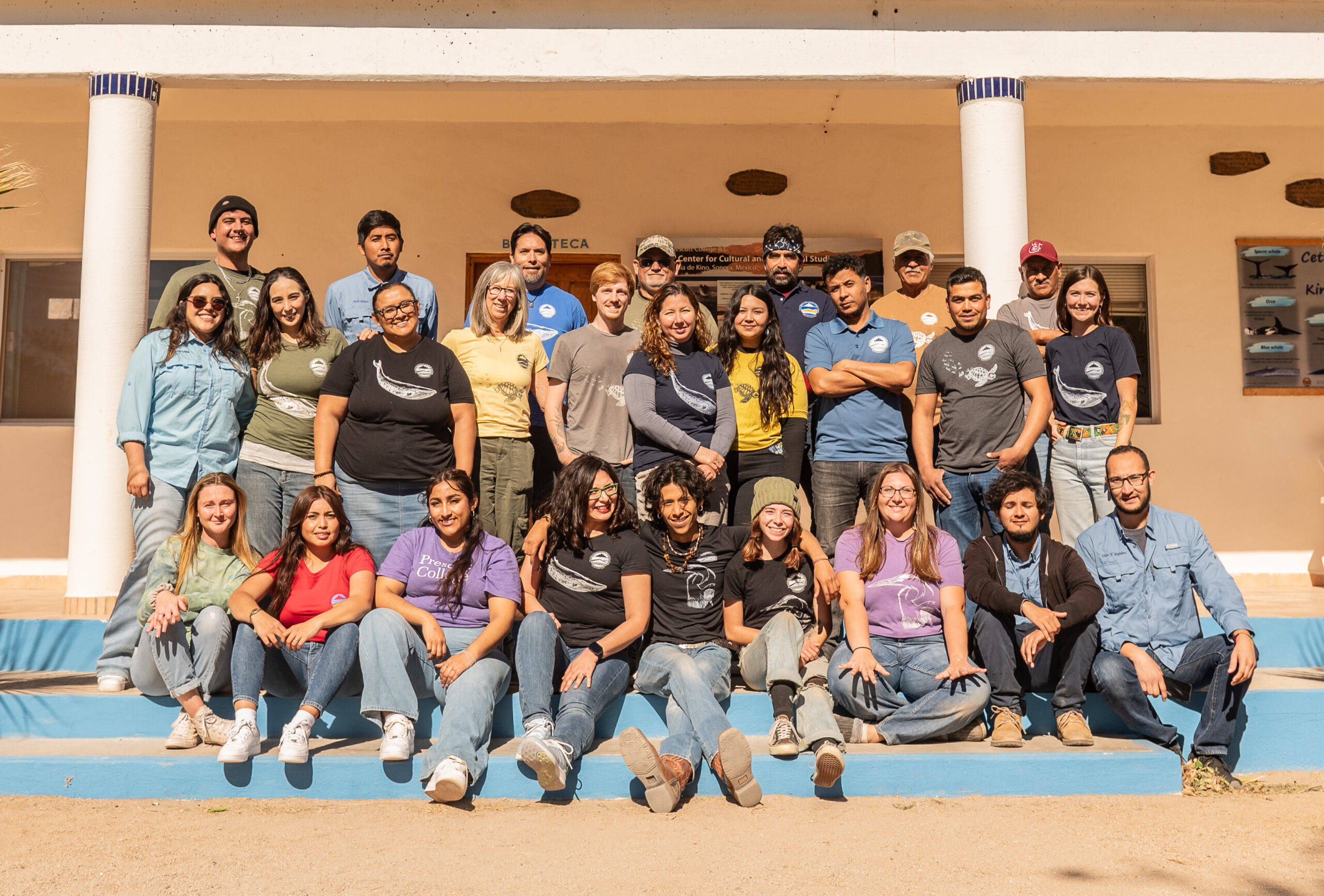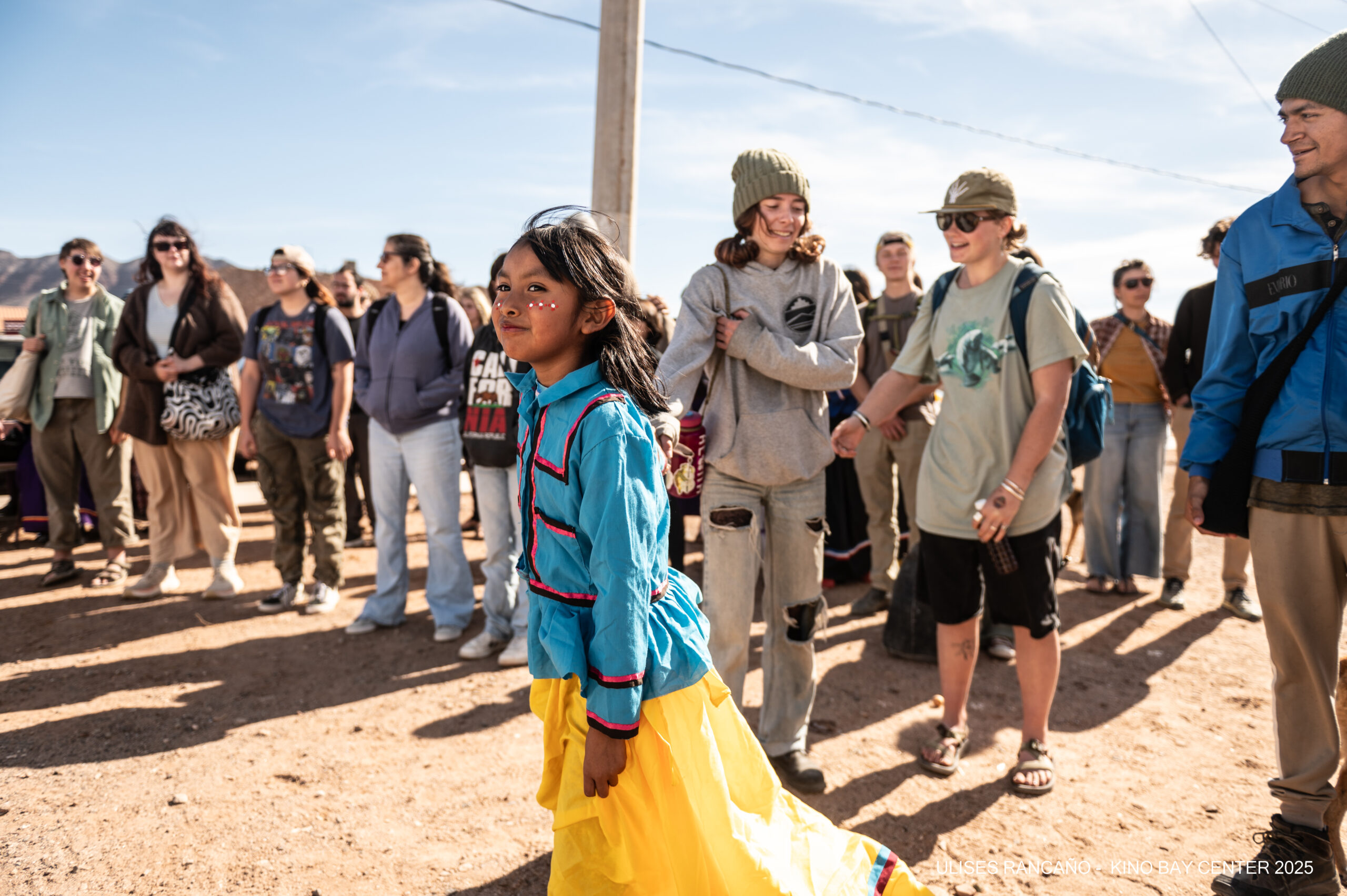
KINO BAY CENTER
NEWSLETTER
KINO BAY CENTER
NEWSLETTER


TABLE OF CONTENTS
INTRO – CENTER DEVELOPMENT – EXPERIENTIAL EDUCATION & CAPACITY BUILDING – RESEARCH & MONITORING – COMMUNITY PARTICIPATION & LEADERSHIP – COMMUNITY & CULTURE
TABLE OF CONTENTS
INTRO – CENTER DEVELOPMENT – EXPERIENTIAL EDUCATION & CAPACITY BUILDING – RESEARCH & MONITORING – COMMUNITY PARTICIPATION & LEADERSHIP – COMMUNITY & CULTURE
Intro
2025 is off to a strong start, with the Center actively engaged in conservation, education, and community initiatives. From research projects to hands-on learning experiences, we continue to promote sustainability and collaboration. Read on for highlights of our recent efforts.
Center Development
Center Development
Sustainable Landscaping Projects
Sustainable Landscaping Projects
Applications of the Center’s principles reach far and wide, extending as far as the Center’s landscaping practices, which are undergoing a sustainable revision thanks to the leadership of the Center’s Assistant Director of Operations, Natasha Riccio.
With the help of the Center’s maintenance superstars Julio Carrasco and Emilio Osuna and inspiration from a volunteer Sophie Linnet, this dream team beautified the Center, but also developed sustainable gardening practices that ensure the Center’s plants stay healthy with minimal water and effort.
By planting native desert plants in strategic locations, the Center’s maintenance team is highlighting the natural beauty of the Sonoran Desert’s flora while also being mindful of the
ecological implications of the vegetation planted around the Center.
The goal for this project was to create something decorative, functional and even educational! By painting murals of native desert flora and fauna, Natasha is helping raise awareness about the regional vegetation. By planting specific plants in strategic locations, such as plants that make up the diet of the desert tortoise in our desert tortoise habitat, we are making sure that the Center’s landscsaping is beautiful, functional, and sustainable.
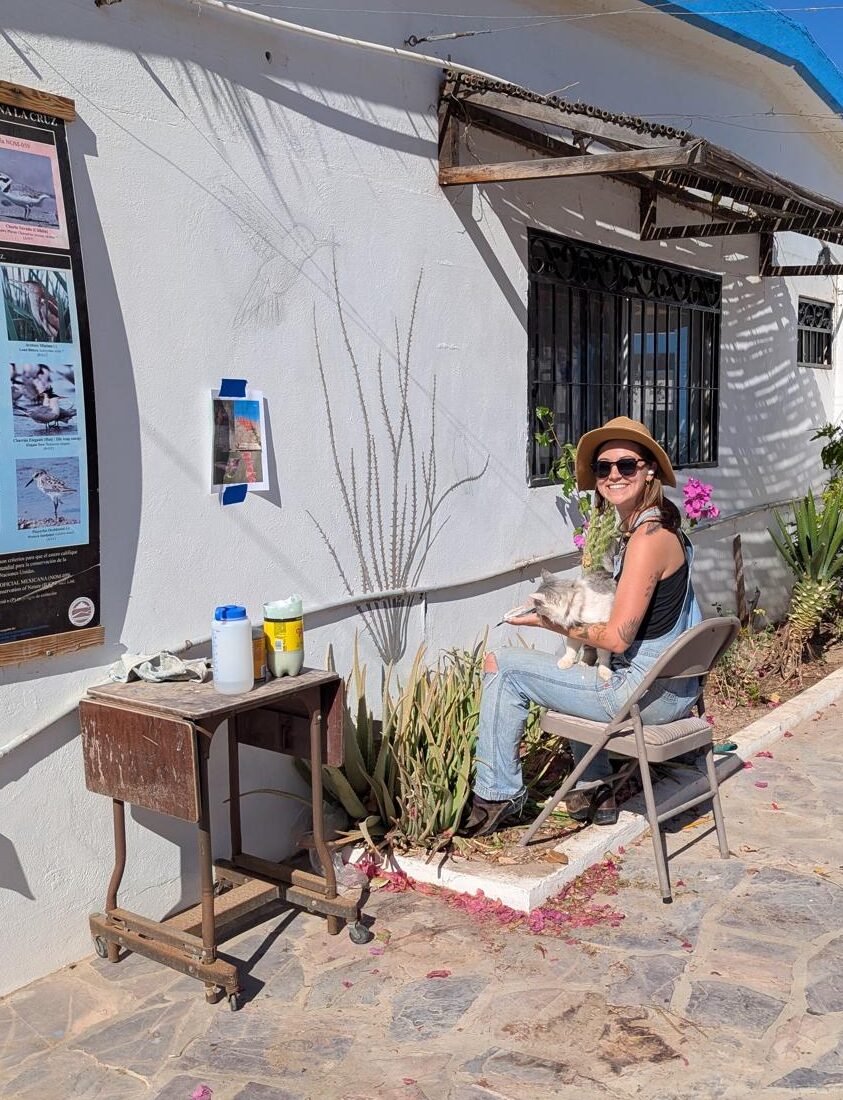
Natasha painting a mural
The goal for this project was to create something decorative, functional and even educational! By painting murals of native desert flora and fauna, Natasha is helping raise awareness about the regional vegetation. By planting specific plants in strategic locations, such as plants that make up the diet of the desert tortoise in our desert tortoise habitat, we are making sure that the Center’s landscsaping is beautiful, functional, and sustainable.
Thanks Natasha, Julio, Emilio, and Sophie!
Space Lent to the Center in Kino Viejo
Community Meeting Space in Kino Viejo
A major focus of the Center’s work is strengthening community leadership of conservation initiatives. Toward that end, the Center is currently supporting 13 community conservation projects, and it has been increasingly important to have a space for community activities in Kino Viejo. We are enormously grateful to Jose Alejandro Cano Sanchez for the gracious loan of his multipurpose space in Kino Viejo. Stay tuned for more about community events held in this space, including upcoming science cafes, “cine debates,” community forums and more!
Experiential Education & Capacity Building
Experiential Education & Capacity Building
Sustainability Education PhD Student Retreat
Sustainability Education PhD Student Retreat
C o n s e r v a t i o n
S p o t l i g h t
C O N S E R V A T I O N S P O T L I G H T
Students from Prescott College’s Sustainability Education PhD program visited the Center this January for a week-long retreat focused on socially just and community-based education, science, and conservation initiatives – an experience that grounded theory in practice and emphasized the importance of community and collaboration on many levels.
Click below to read about this impactful event!
Spanish Intensive
Spanish Intensive Class
The Prescott College Spanish Intensive class was the first to arrive at the Center this spring semester.
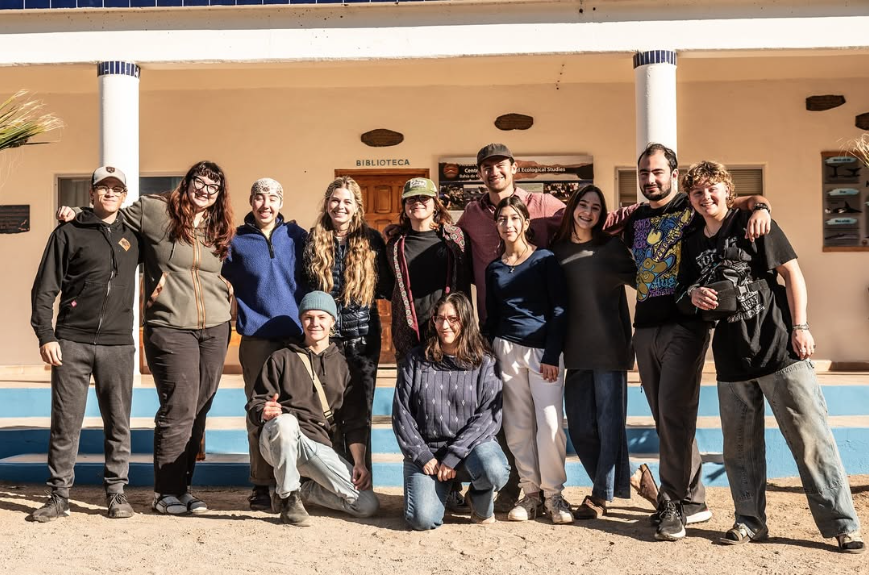
For three weeks, nine students experienced the coastal culture of northwestern Mexico firsthand, living with their host families in Bahía de Kino in a completely Spanish-speaking environment!
During their stay, students learned about the local food, traditions, education system, music, dance, livelihoods, and more. Through this experience students and families from different backgrounds form strong bonds that endure over time, creating a multicultural community in Kino.
Sea Kayaking & Natural History Class
Sea Kayaking & Natural History Class
The Prescott College Sea Kayaking and Marine Natural History students spent three weeks learning technical skills of sea kayaking and honing their natural history observation skills in the most immersive way possible.
Prescott College students got up close and personal with the natural beauty of the Midriff Island Region as they explored iconic locations in the area such as Santa Rosa Estuary, Isla Alcatraz, and Laguna La Cruz where they camped out for two nights.
The Prescott College Sea Kayaking and Marine Natural History students spent three weeks learning technical skills of sea kayaking and honing their natural history observation skills in the most immersive way possible.
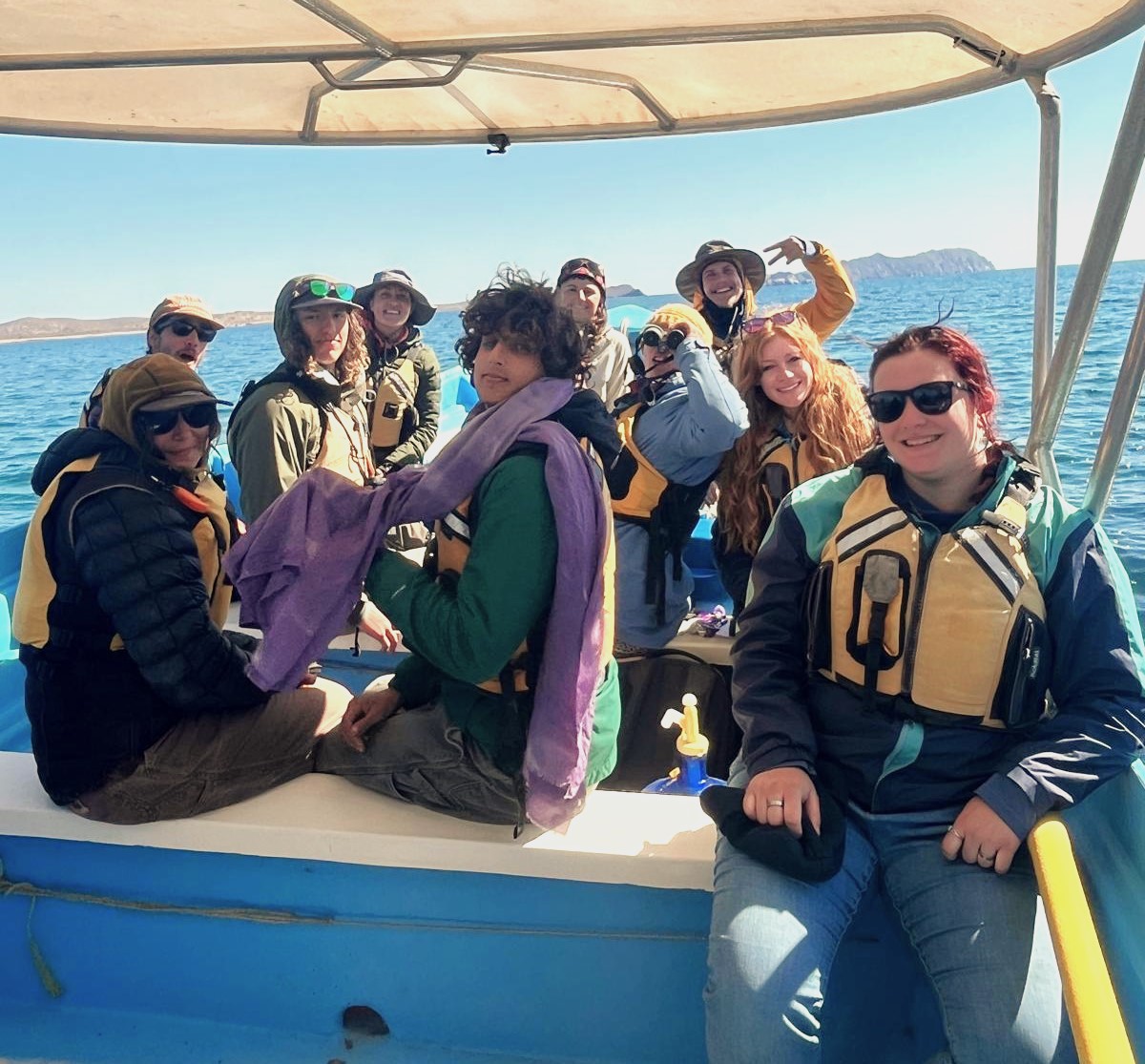
Prescott College students got up close and personal with the natural beauty of the Midriff Island Region as they explored iconic locations in the area such as Santa Rosa Estuary, Isla Alcatraz, and Laguna La Cruz where they camped out for two nights.
During their studies the students learned important lessons about tides and currents, paddling and self-rescue techniques, and of course, the natural history of marine wildlife in the area.
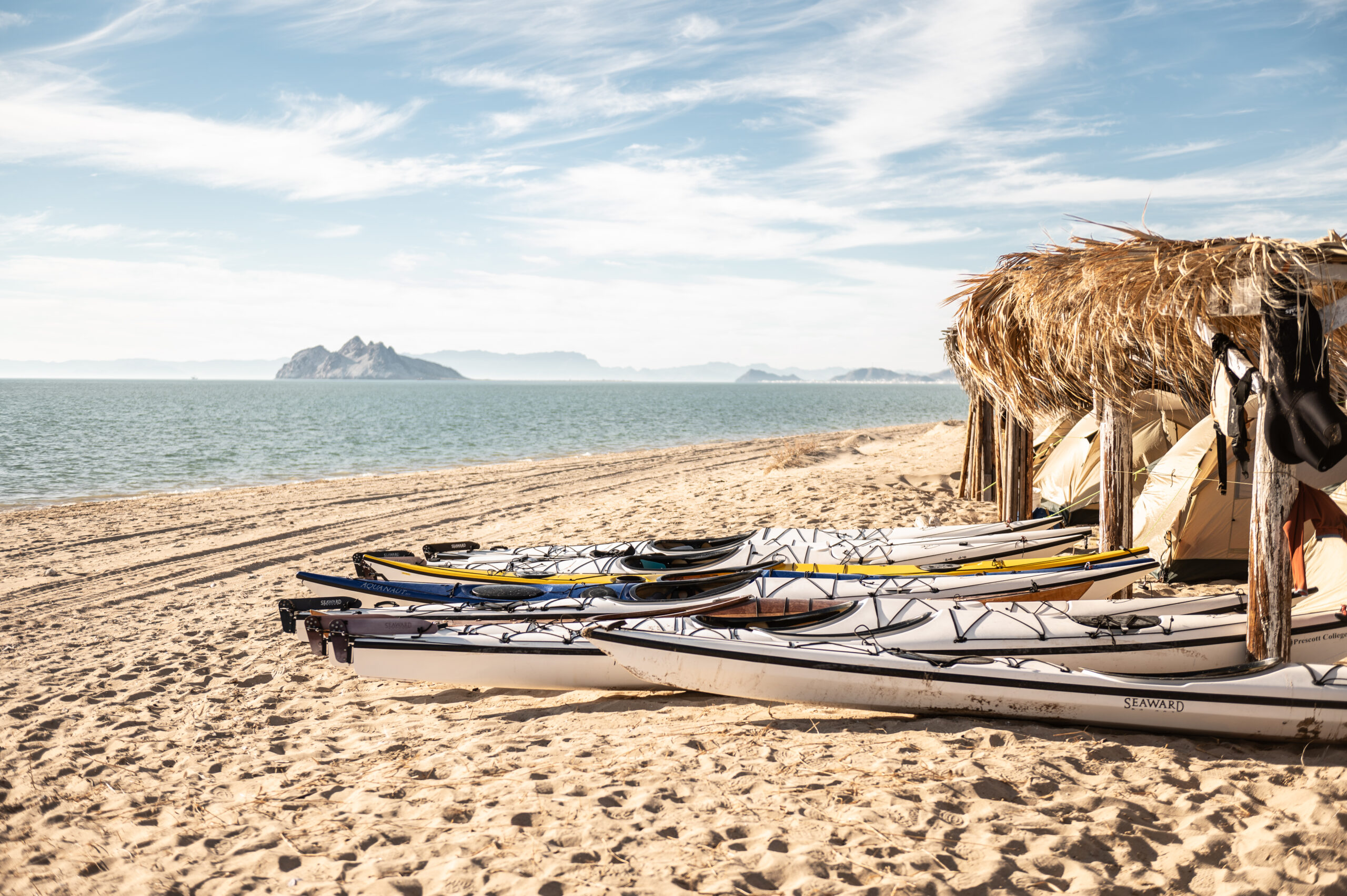
During their studies the students learned important lessons about tides and currents, paddling and self-rescue techniques, and of course, the natural history of marine wildlife in the area.
Treehouse Learning Community
Treehouse Learning Community
This January, as every year, we had the Treehouse Learning Community visit the station.Treehouse is a small co-educational residence and study support program for college students ages 18-30 who are committed to a path of recovery, self-discovery, and higher education.
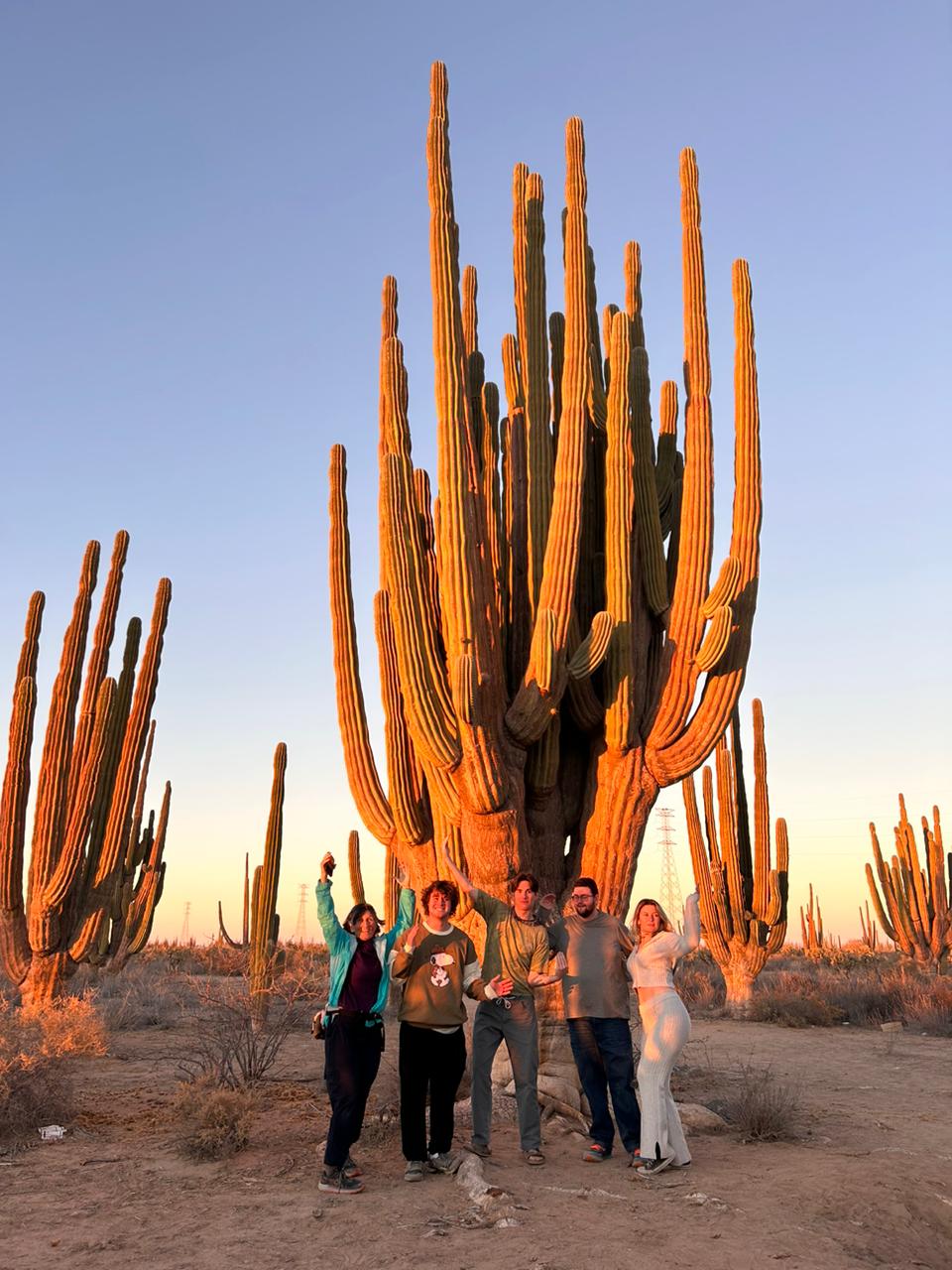
Through transformative experiences, they had the opportunity to connect with the landscape and culture of the Midriff Island Region of the Gulf, but more importantly, with themselves, finding inspiration and perspectives for living a fuller life.
Colorado Rocky Mountain School
Colorado Rocky Mountain School
The Colorado Rocky Mountain School was the very first high school to visit the Center 20 years ago. They returned this year with their teacher (and PC alum) Peter Benedict to participate in a week-long immersive Biocultural Explorations course.
"I have a deeper understanding of how nature connects to community"
During their learning expedition, they explored the coastal, marine, and desert ecosystems of the region by boat, car, and on foot. The group also participated in an overnight camping trip where they learned about the beauty and biocultural importance of Santa Rosa Estuary. Students were also lucky enough to attend Kino Bay’s International Wetlands Day festival where they participated in local community-based conservation efforts by taking part in an cleanup!
Research & Monitoring
Research & Monitoring
Ecological Health of the Gulf of California
Ecological Health of the Gulf of California
The Gulf of California is world renowned for its productive and rich biodiversity. Over the past 18 months the Center’s Director, Lorayne Meltzer, has been working with Drs. Ben Wilder and Jorge Torres to compile perspectives from long-term researchers about the condition of the different species and ecosystems they study.
Of the 41 ecological projects summarized by 32 researchers, the following results were found regarding taxas in the gulf:
The study shows an inherent resilience of the processes that have driven the great abundance and diversity of the Gulf of California; at the same time, it calls our immediate attention to the numerous declines resulting from multiple stressors.
The goal of the study is to inform and promote dialog amongst a broad range of stakeholders toward conservation action.
Overall, they show an alarming decline of higher trophic level populations throughout the Gulf.
The study shows an inherent resilience of the processes that have driven the great abundance and diversity of the Gulf of California; at the same time, it calls our immediate attention to the numerous declines resulting from multiple stressors.
The goal of the study is to inform and promote dialog amongst a broadrange of stakeholders toward conservation action.
The study is also getting attention in the press: an article was recently published by Mongabay Latin America based off of interviews with Lorayne Meltzer and Ben Wilder. Click below to learn more about the report and the interview.
The study is also getting attention in the press: an article was recently published by Mongabay Latin America based off of interviews with Lorayne Meltzer and Ben Wilder. Click below to learn more about the report and the interview.
Marine Mammal High Sighting Season
Marine Mammals High Sighting Season
An increase in Fin Whale and Blue Whale sightings marked the beginning of the high whale sighting season in the region, which means it’s high drone usage season for the Marine Mammal Monitoring Program. By employing drones, the program is able to observe marine mammal behavior which would otherwise be impossible to see plainly from the Center’s pangas – something extra useful for the high sighting season.
According to Hector Perez, the Marine Mammal Program Coordinator, the high volume of sightings is thanks to the richness of nutrients found in the area which also contributes to its reputation as a zone of refuge for whales.
This concept is illustrated well in this recent video of a Fin Whale feeding in shallow waters. See this impressive capture yourself in the video below.
Héctor Pérez/Kino Bay Center
Grupo Tortuguero Annual Gathering
Grupo Tortuguero Annual Gathering
Local community-based conservation efforts went regional this January in Mazatlan when members from the Center, Grupo Tortuguero de Bahia de Kino, and Grupo Tortuguero de Punta Chueca participated in the 26th Annual Reunion of Grupo Tortuguero de las Californias.
Grupo Tortuguero de las Californias is a national network of community-based sea turtle monitoring groups focused on protecting the wellbeing of sea turtles. The Center collaborates closely with two local branches in the region, Grupo Tortuguero de Bahia de Kino and Grupo Tortuguero de Punta Chueca, towards the collective mission of protecting the five sea turtle species found in the area.
Five Center staff and community members participated this year: Grisel Heredia, Grupo Tortuguero de Bahia de Kino’s Fabián Becerra, Maribel Becerra, and Grupo Tortuguero de Punta Chueca’s Rey Alfonso Morales López, Rosa Gardenia Barnett López, and Alissa Lopez Barnett.
The group gained a new perspective on the current sea turtle monitoring scene as they participated in workshops covering a diverse range of
Five Center staff and community members participated this year: Grisel Heredia, Grupo Tortuguero de Bahia de Kino’s Fabián Becerra, Maribel Becerra, and Grupo Tortuguero de Punta Chueca’s Rey Alfonso Morales López, Rosa Gardenia Barnett López, and Alissa Lopez Barnett.
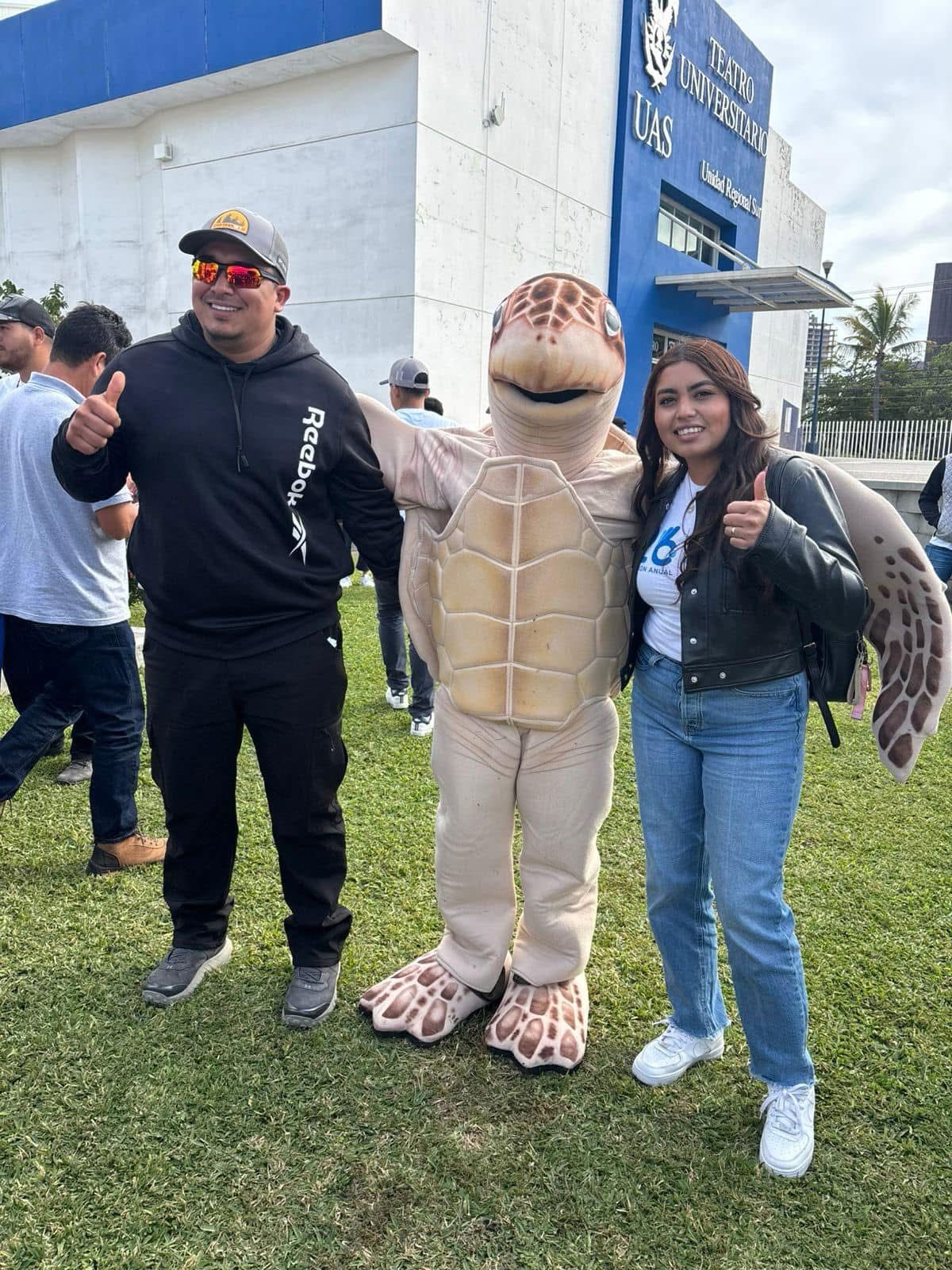
Fabián Becerra (left) and Maribel Becerra (right)
topics such as environmental education, disease detection in sea turtles, and the effects of climate change on sea turtles and their habitats.
Then, Center staff members had the opportunity to present the results of their efforts throughout the season with a focus on the monitoring of Green Sea Turtles in feeding areas – the challenges that came from doing so and the solutions that came about as a response.
The group gained a new perspective on the current sea turtle monitoring scene as they participated in workshops covering a diverse range oftopics such as environmental education, disease detection in sea turtles, and the effects of climate change on sea turtles and their habitats.
Then, Center staff members had the opportunity to present the results of their efforts throughout the season with a focus on the monitoring of Green Sea Turtles in feeding areas – the challenges that came from doing so and the solutions that came about as a response.
On the last day they attended an insightful talk centered about the inclusive and collaborative conservation model of Sea Turtles in the Mexican Pacific, aptly titled “Holistic Strategy.”
The Kino Bay Center, together withy the Grupo Tortugueros de Bahia de Kino and Punta Chueca, look forward to applying this newly obtained knowledge to their mission of conserving and protecting the sea turtles of the Midriff Island Region.
Pacific Seabird Group Joint Meeting
Pacific Seabird Group Joint Meeting
This January the Waterbird Monitoring Program traveled all the way to San Jose, Costa Rica for the 2025 Waterbird Society and Pacific Seabird Group Joint Meeting. The conference took place from January 6th – 9th and covered a wide range of topics affecting the modern waterbird landscape including climate change effects, machine learning, and the importance of traditional ecological knowledge.
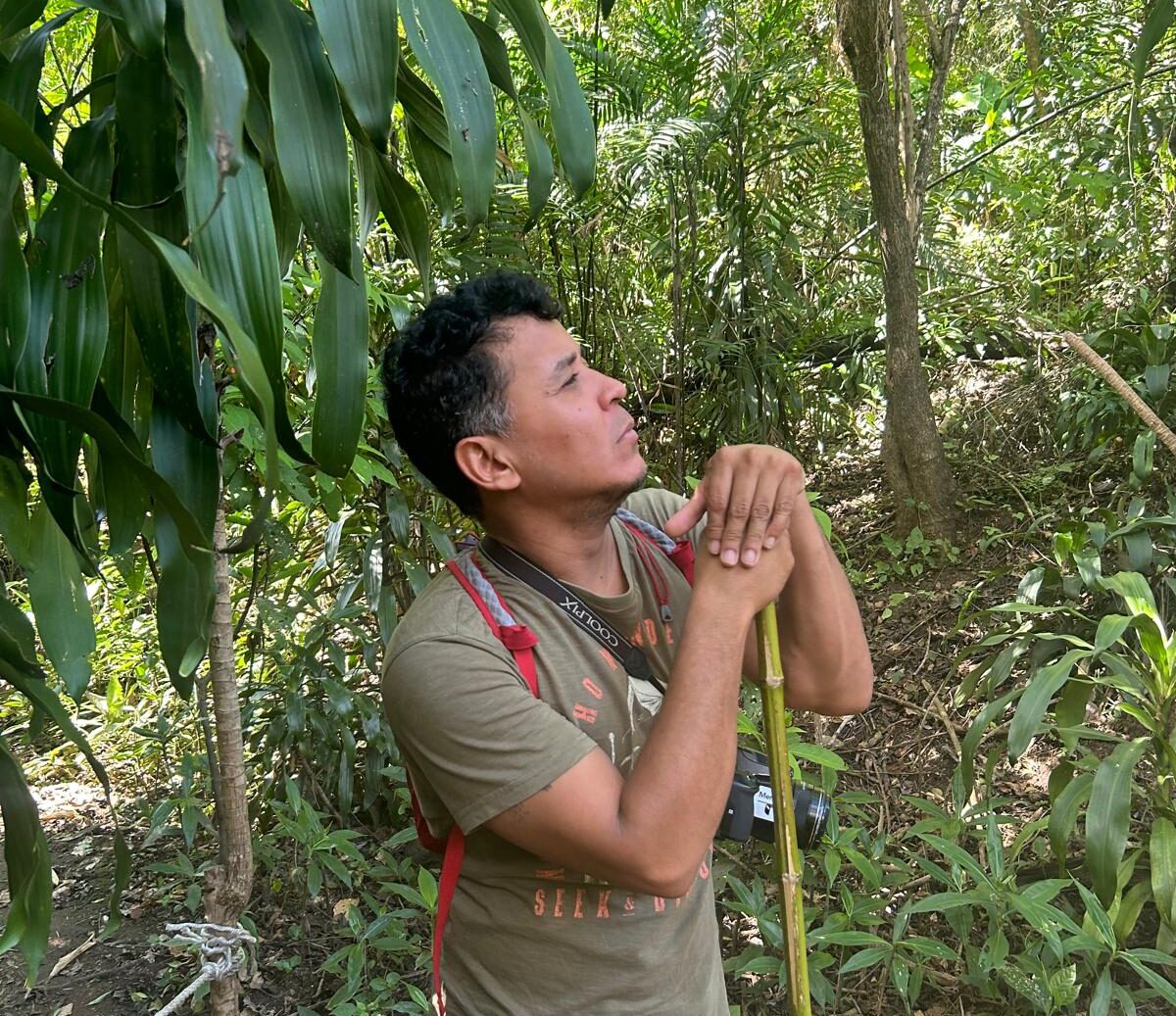
Jaime Martinez
Each member of the Center’s Waterbird Monitoring Program had the pleasure of contributing to the conference’s activities by presenting findings from long-term research done here at the Center.
Click below to learn more about each member’s presentations:
Each member of the Center’s Waterbird Monitoring Program had the pleasure of contributing to the conference’s activities by presenting findings from long-term research done here at the Center. Click below to learn more about each member’s presentations
Community Participation & Leadership
Community Participation & Leadership
Día de los Humedales
Dia de los Humedales
Community conservation leaders collaborating in projects with the Center hosted events on February 1st (Punta Chueca) and 8th (Kino) in celebration of World Wetlands Day (February 2).
Punta Chueca
On February 1, the first celebration of the event took place in Punta Chueca, featuring a live session of the community project “Escuela Biocultural,” where mentors discussed various branches of Comcaac traditional knowledgesuch as songs and dances, medicinal plants, and ancestral stories.
On February 1, the first celebration of the event took place in Punta Chueca, featuring a live session of the community project “Escuela Biocultural,” where mentors discussed various branches of Comcaac traditional knowledge such as songs and dances, medicinal plants, and ancestral stories.
One discussion, led by Escuela Biocultural mentor René Montaño Herrera, discussed the cultural importance of mangroves for the Comcaac tribe – an especially relevant topic considering the abundance of these plants in the wetlands surrounding Punta Chueca.
One discussion, led by Escuela Biocultural mentor René Montaño Herrera, discussed the cultural importance of mangroves for the Comcaac tribe – an especially relevant topic considering the abundance of these plants in the wetlands surrounding Punta Chueca.
The event also included presentations by the community conservation groups collaborating with the Center including Punta Chueca’s Grupo Tortuguero, Environmental Conservation Group Socaaix, Mangrove Restoration Group led by Erica Barnett, Punta Chueca’s Marine Mammal Monitoring Group, and the botanical garden project led by Humberto Romero Morales.
The event also included presentations by the community conservation groups collaborating with the Center including Punta Chueca’s Grupo Tortuguero, Environmental Conservation Group Socaaix, Mangrove Restoration Group led by Erica Barnett, Punta Chueca’s Marine Mammal Monitoring Group, and the botanical garden project led by Humberto Romero Morales.
In this first edition, posters with Ramsar site information used in the community update workshops held last March were also displayed. Currently, work is underway to install these pieces in the village.
Bahía de Kino
The event in Kino was held at the mouth of the Laguna La Cruz and showcased the depth and diversity of collaborations and projects geared toward understanding and protecting this important estuary.
The event in Kino was held at the mouth of the Laguna La Cruz and showcased the depth and diversity of collaborations and projects geared toward understanding and protecting this important estuary.
Community groups and partners presented amazing materials about the estuary’s ecology and conservation efforts.
After the presentations, the community joined efforts to carry out a massive cleanup of the La Cruz estuary, collecting over 1,700 pounds of waste.
The event was also covered by NPR (KJZZ)! Click below to see and listen to the piece aired on NPR:
Thank you for celebrating these essential ecosystems with us!
Community & Culture
Community & Culture
Center Birthdays
Center Birthdays
Here at the Center we love analyzing data! In fact, we love analyzing data so much that we even record and analyze data about ourselves.
A recent study conducted by Jaime Martinez revealed an interesting pattern about the birth dates of staff at the Center:
January-February is the season in which the highest number of Center staff members were born.
It’s easy to chalk this up to coincidence, but the numbers reveal something more interesting: other months of the year have an average of around 2 birthdays per month while January and February both have a count of 4 birthdays per month – an impressive double the average.
A recent study conducted by Jaime Martinez revealed an interesting pattern about the birth dates of staff at the Center: January-February is the season in which the highest number of Center staff members were born.
It’s easy to chalk this up to coincidence, but the numbers reveal something more interesting: other months of the year have an average of around 2 birthdays per month while January and February both have a count of 4 birthdays per month – an impressive double the average.
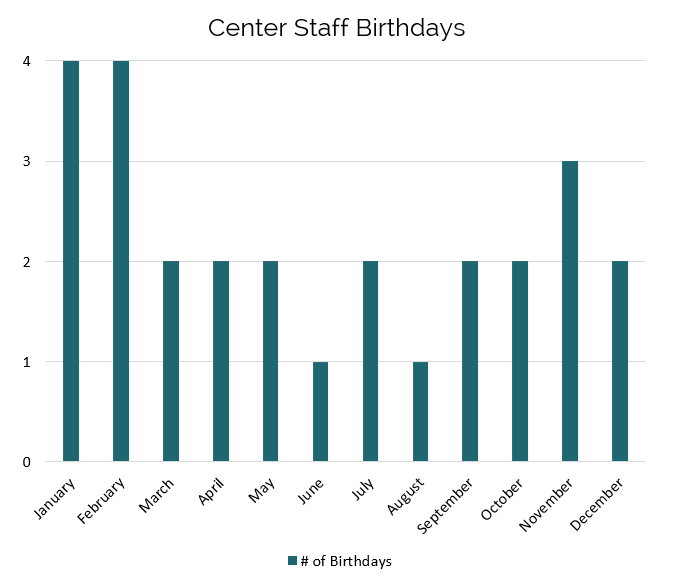
The implications of this data are unclear, but could it be possible that it was written in the stars for many of the Center’s staff to come live and work here at the Center contributing to the mission of the biocultural conservation of the Midriff Island Region? Further research is needed to draw any conclusions – stay tuned.
The implications of this data are unclear, but could it be possible that it was written in the stars for many of the Center’s staff to come live and work here at the Center contributing to the mission of the biocultural conservation of the Midriff Island Region? Further research is needed to draw any conclusions – stay tuned.
Invitation to Support Our Work
Invitation to Support Our Work
We invite you to support the work of the Center in making a real difference in social justice and environmental conservation. If you would like your donation to go toward a specific area of our work, please contact us at [email protected]

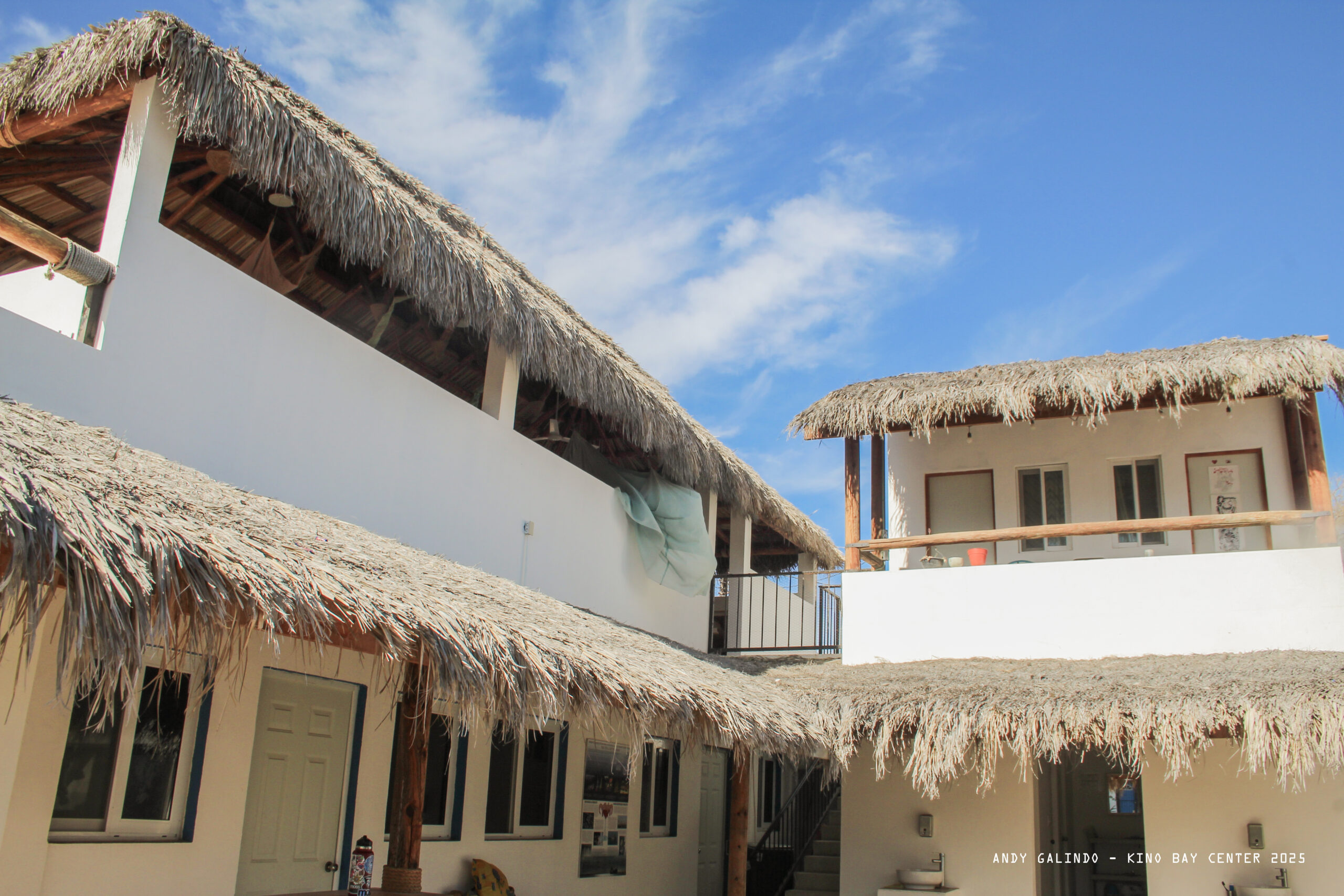
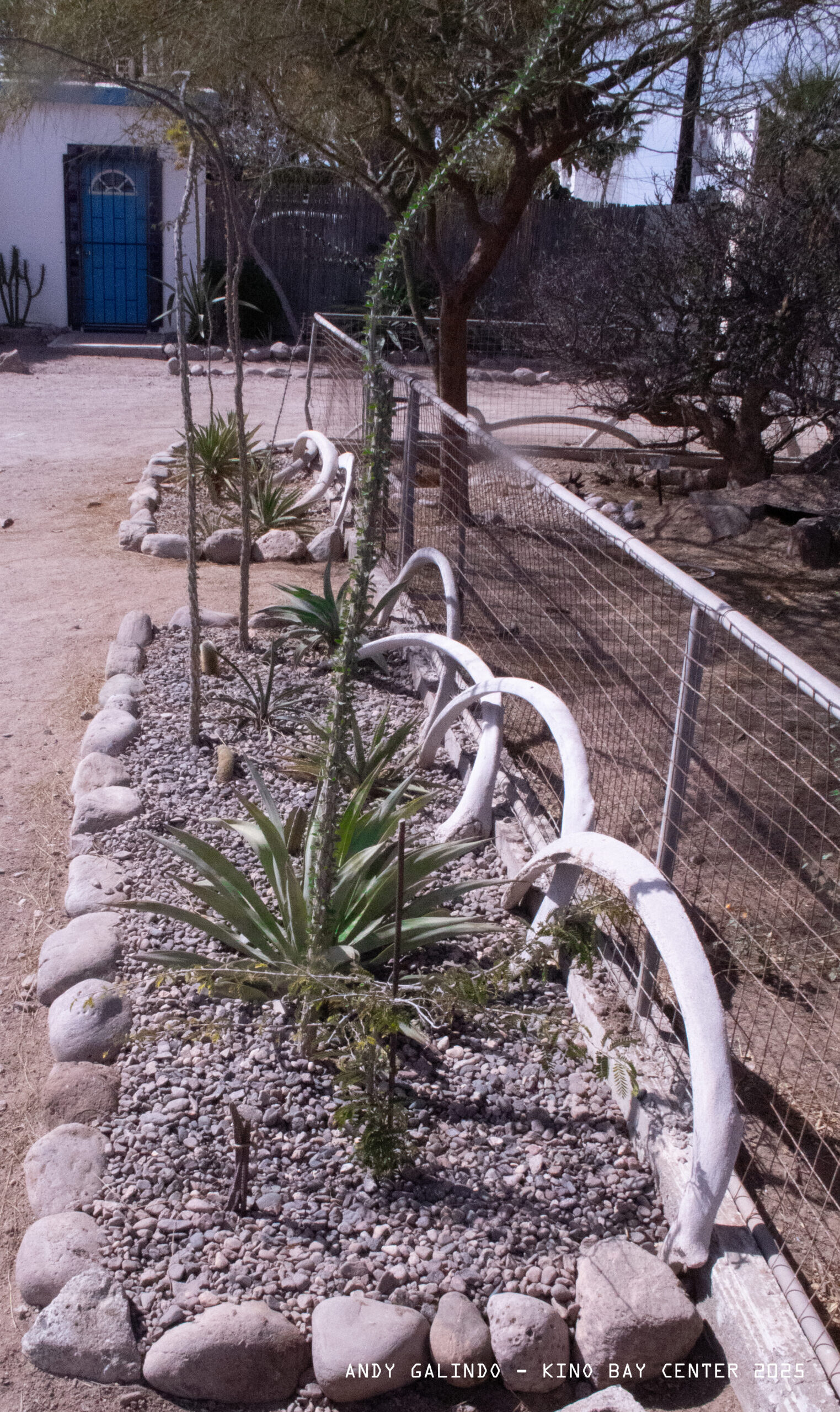
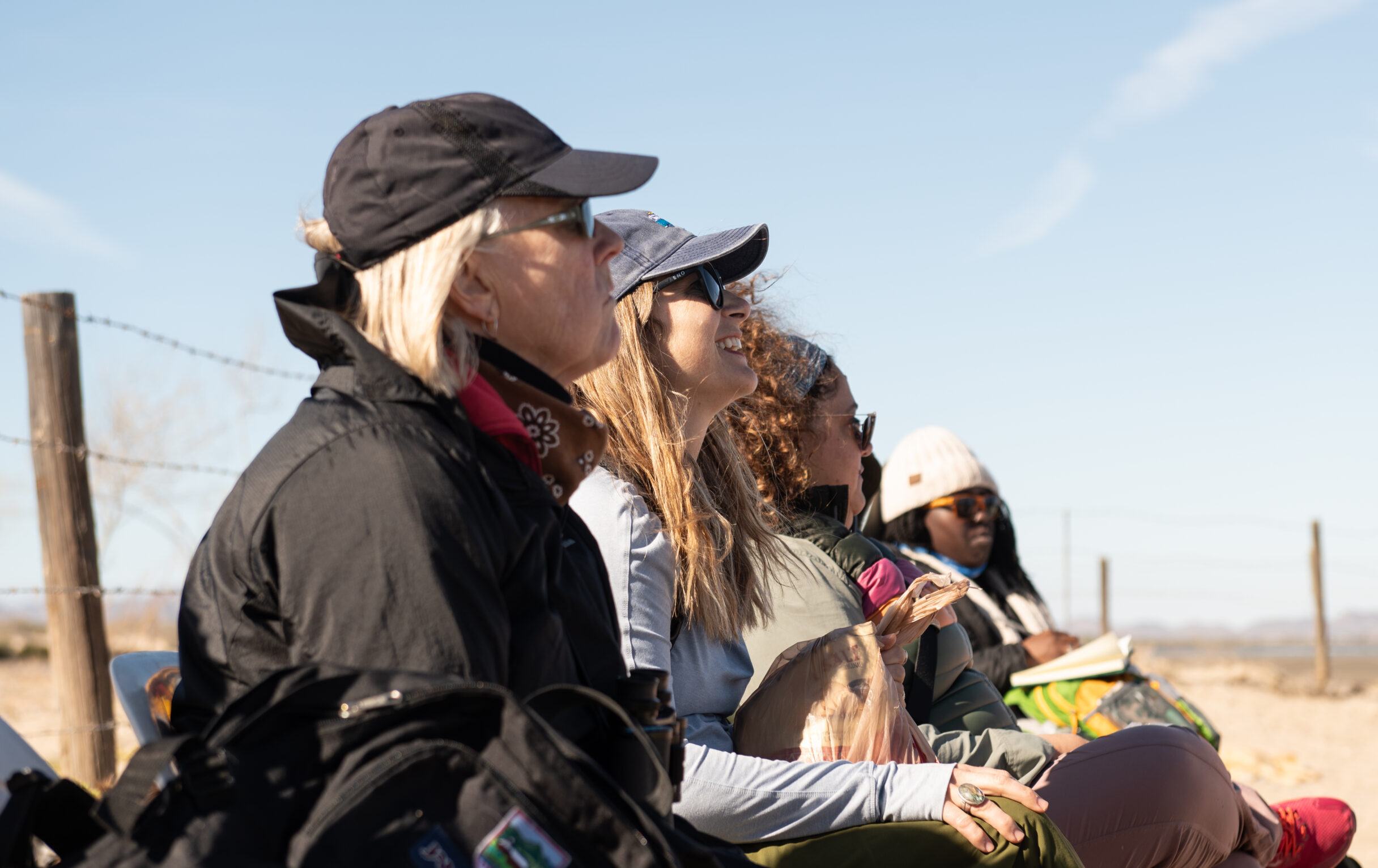
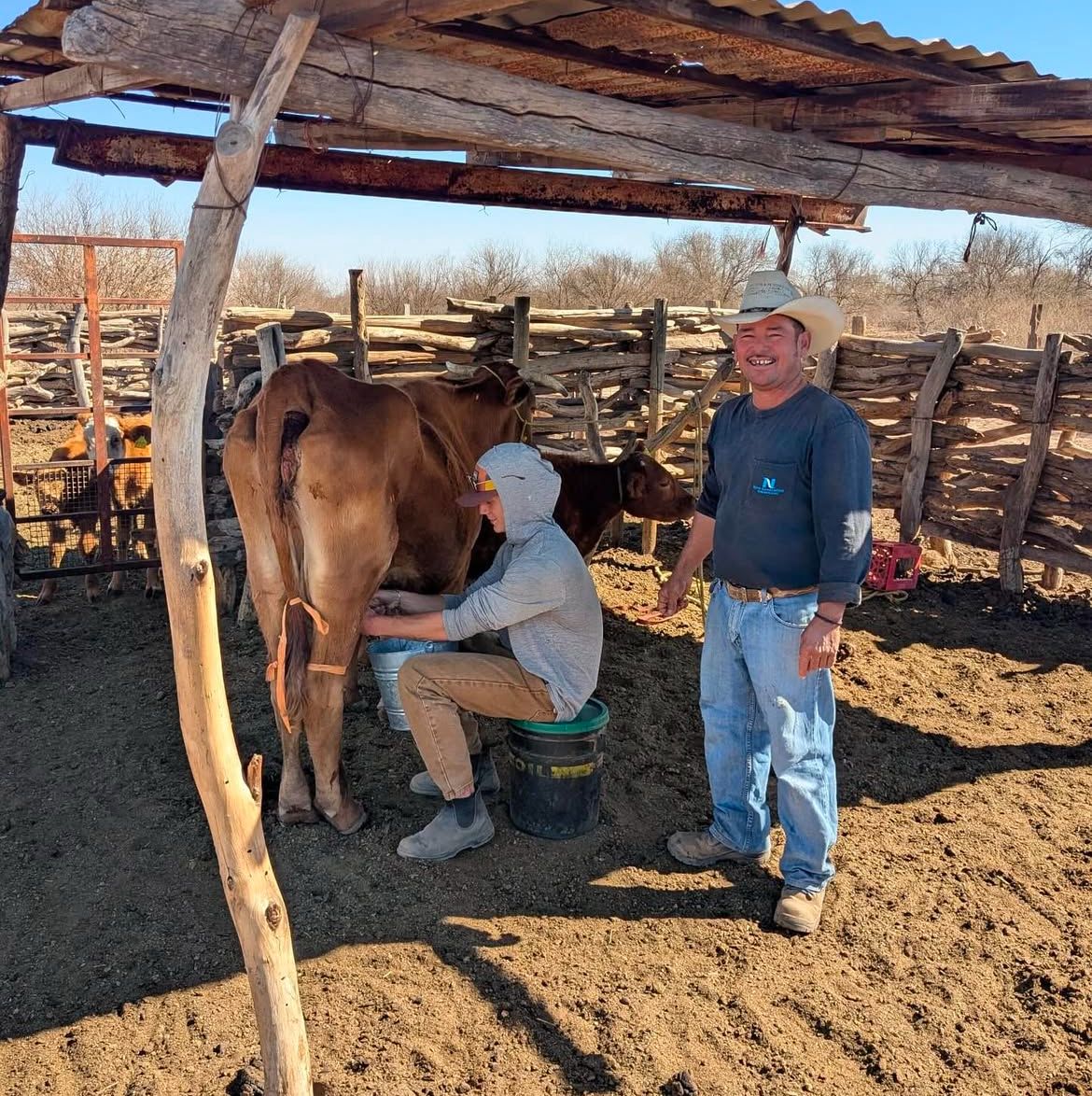
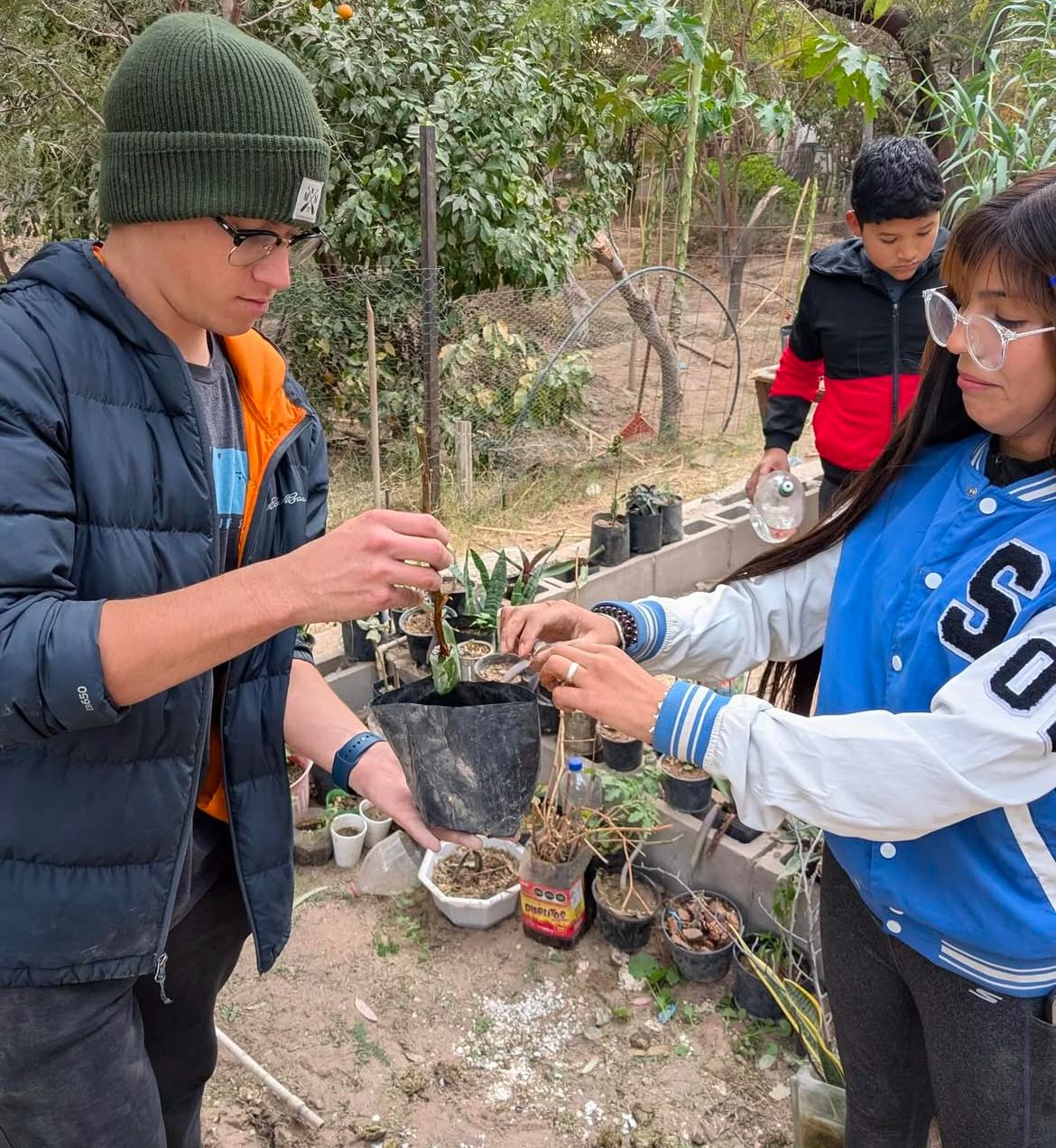
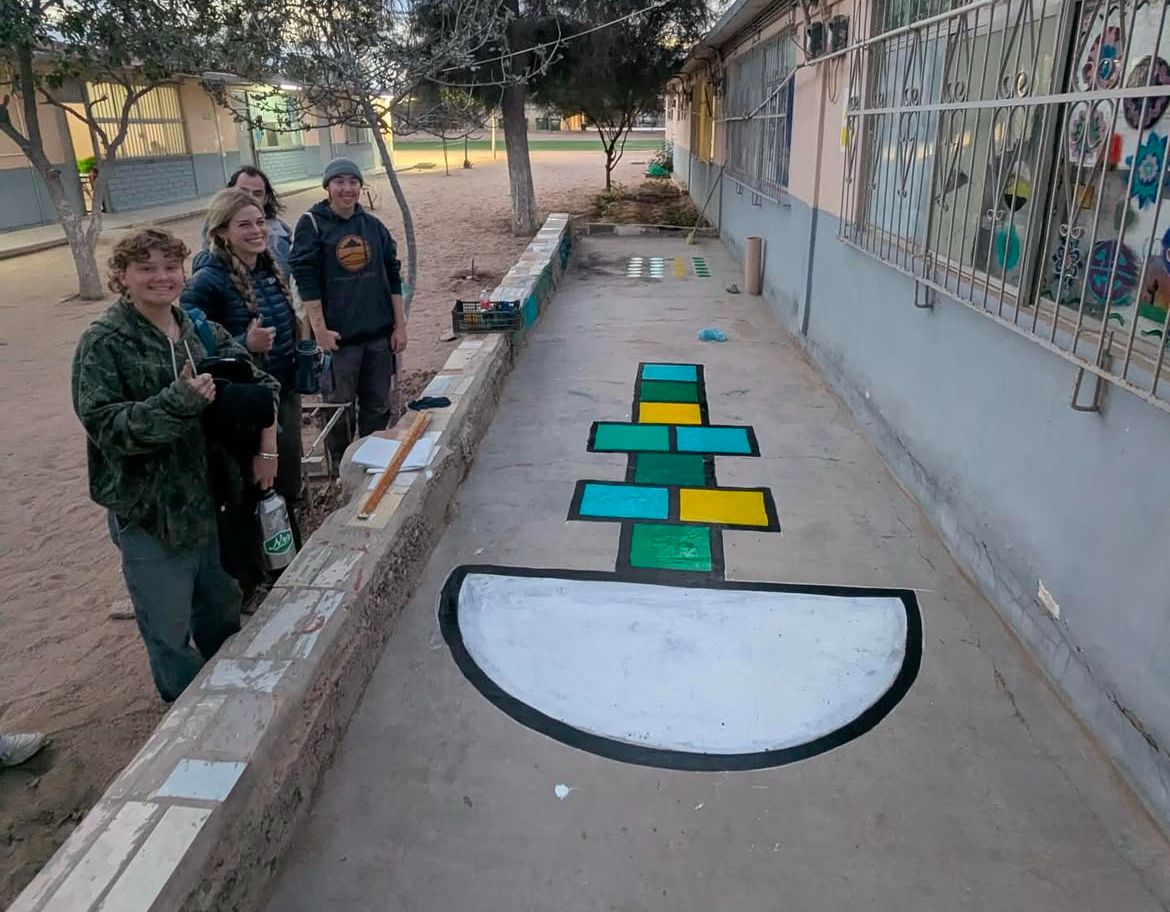
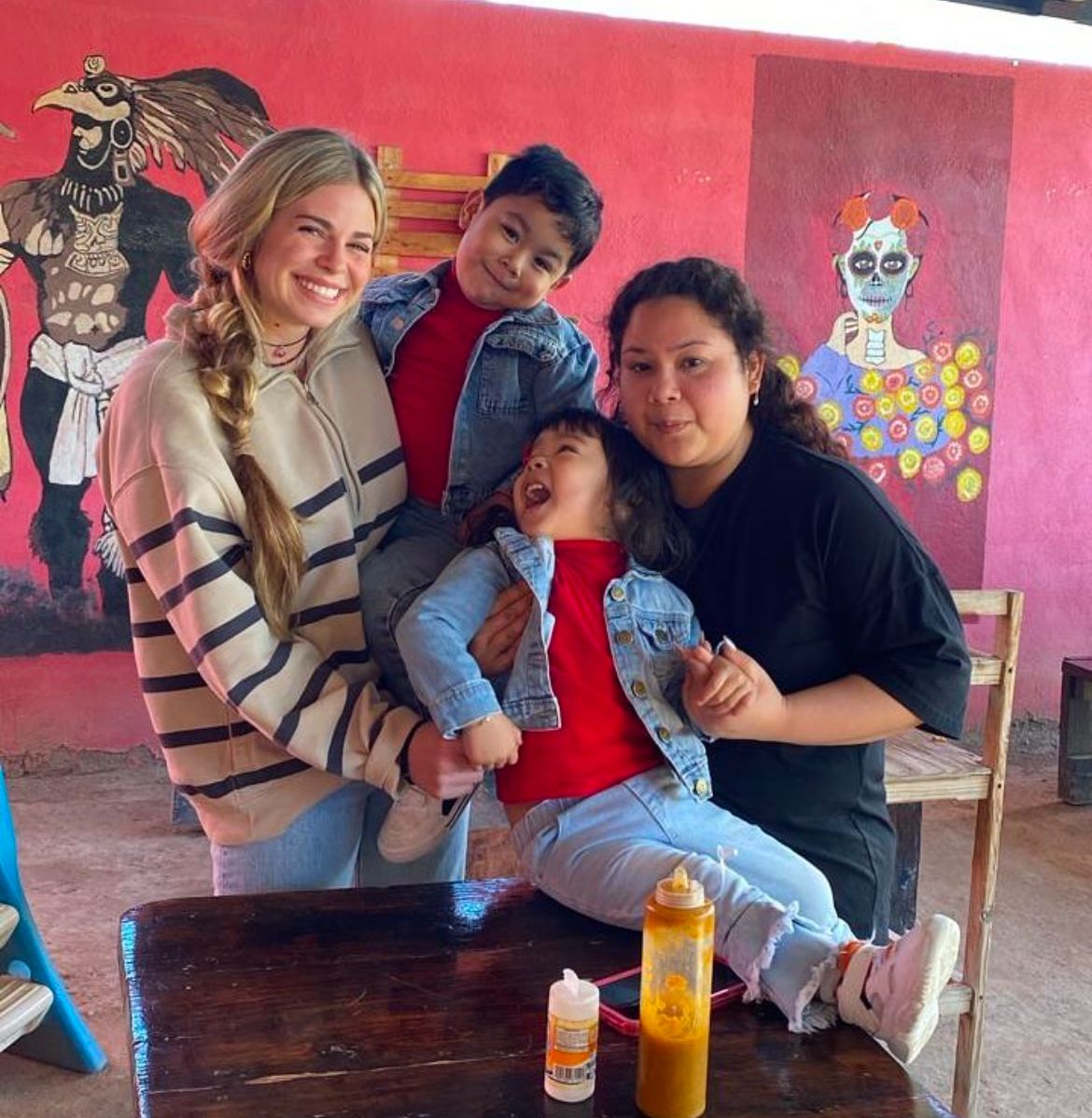
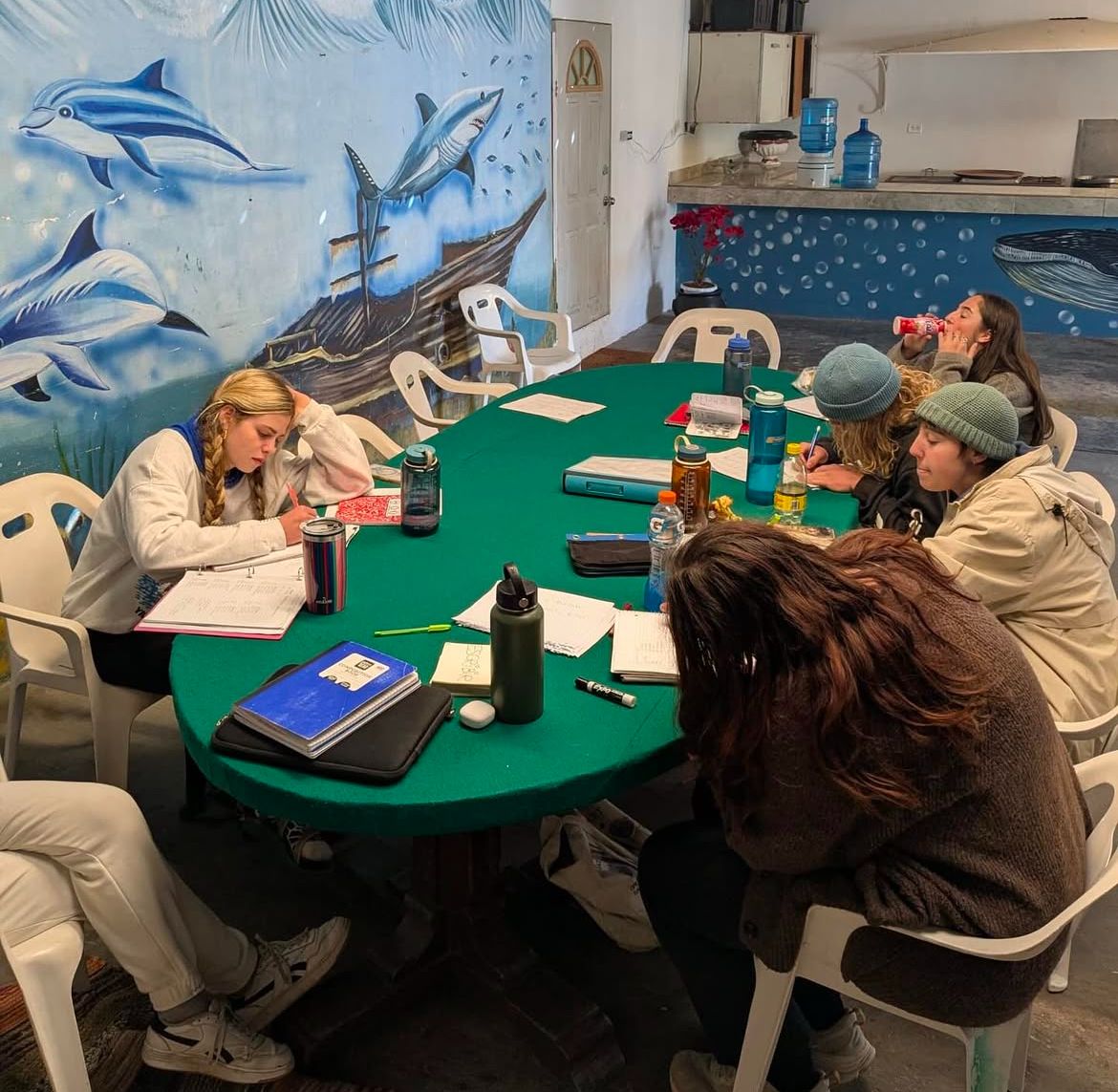
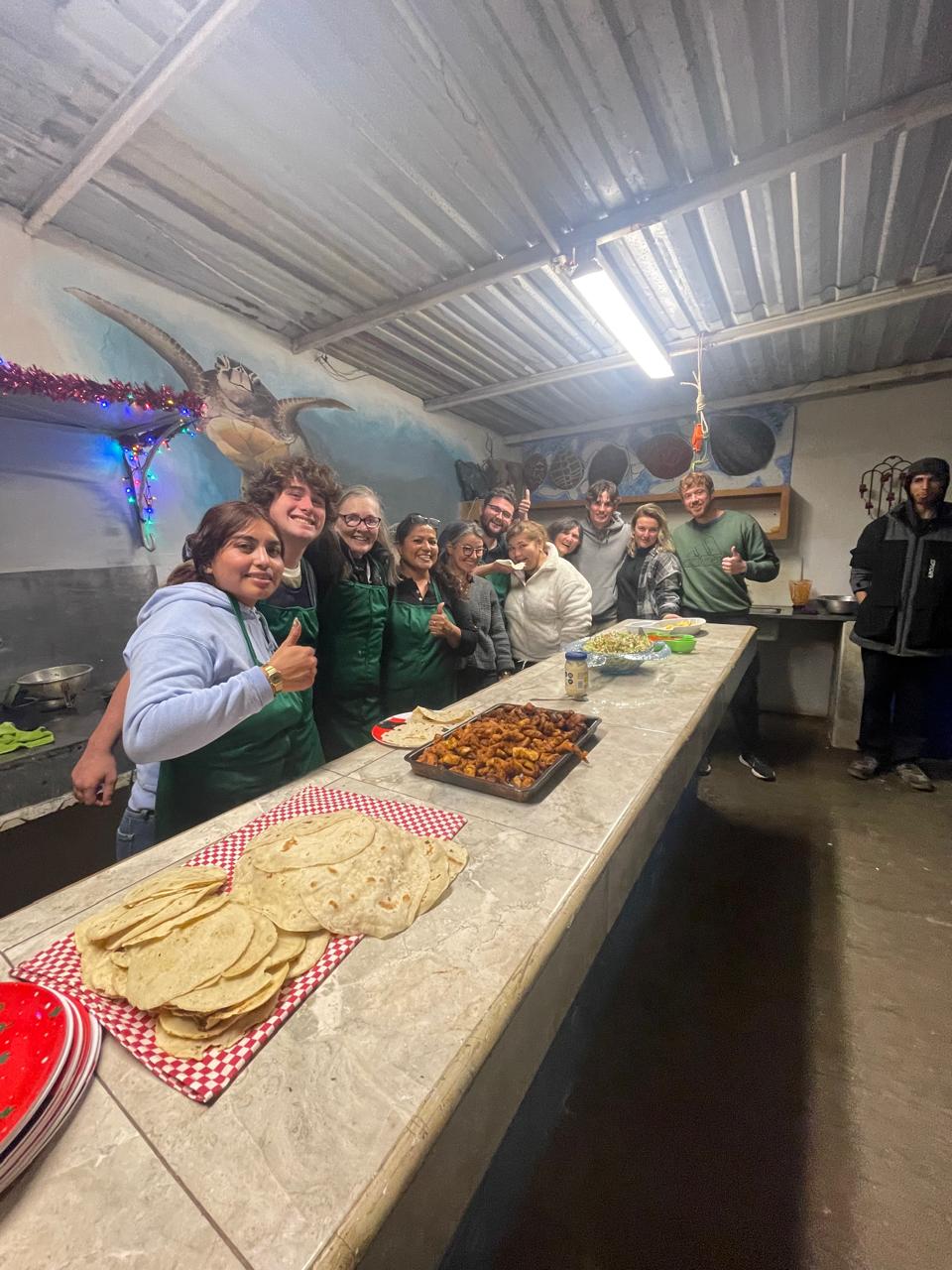
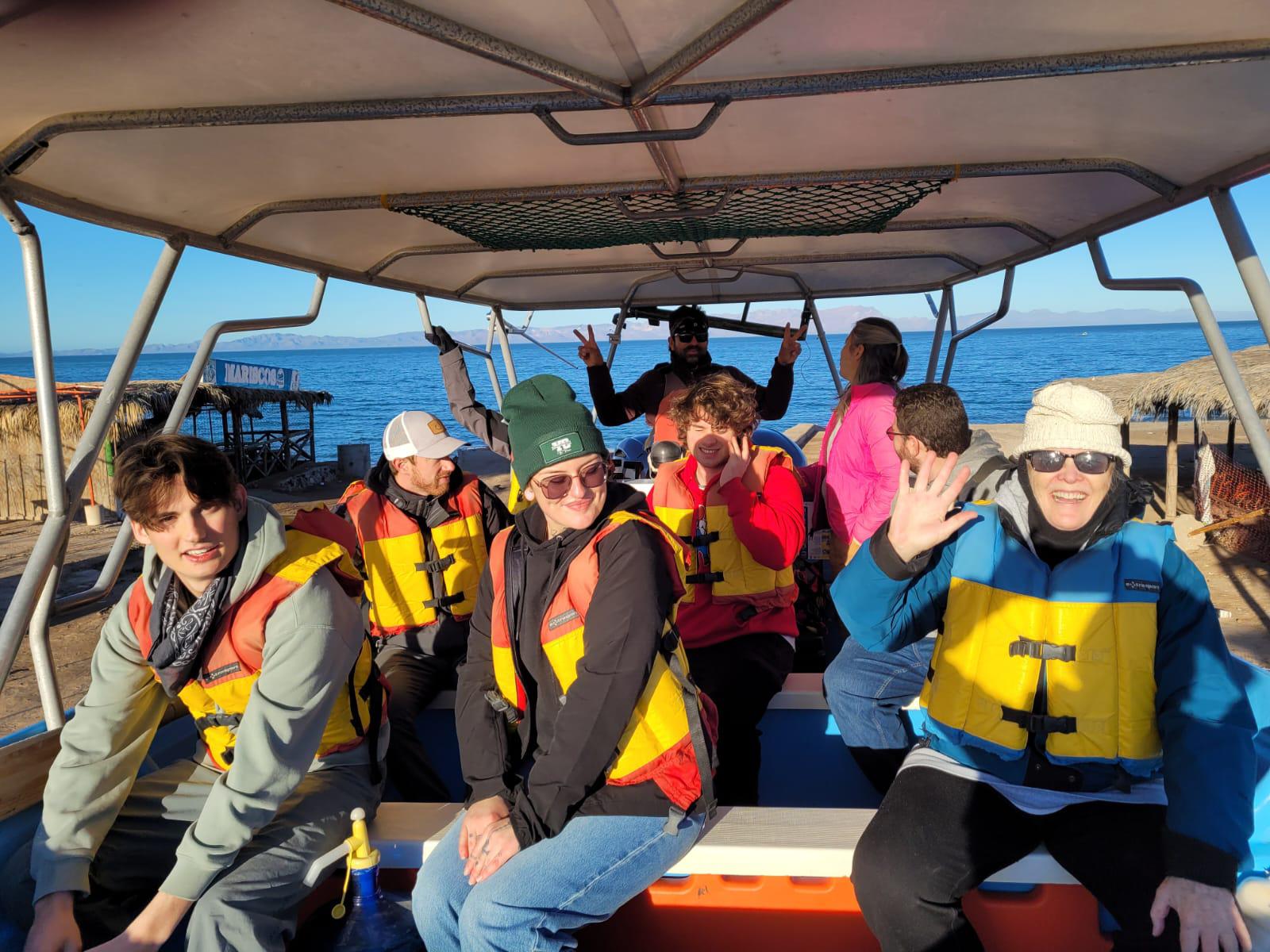
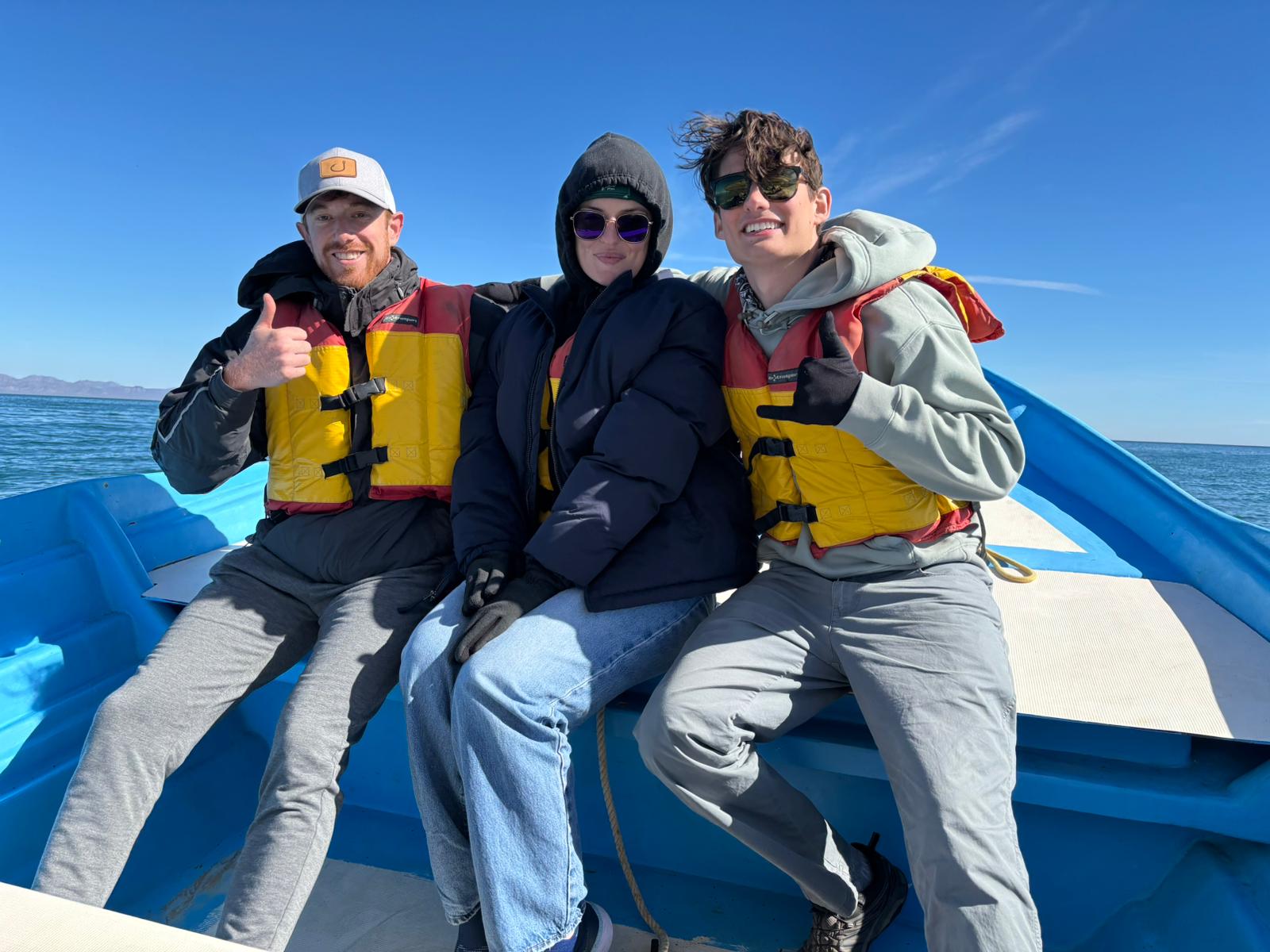
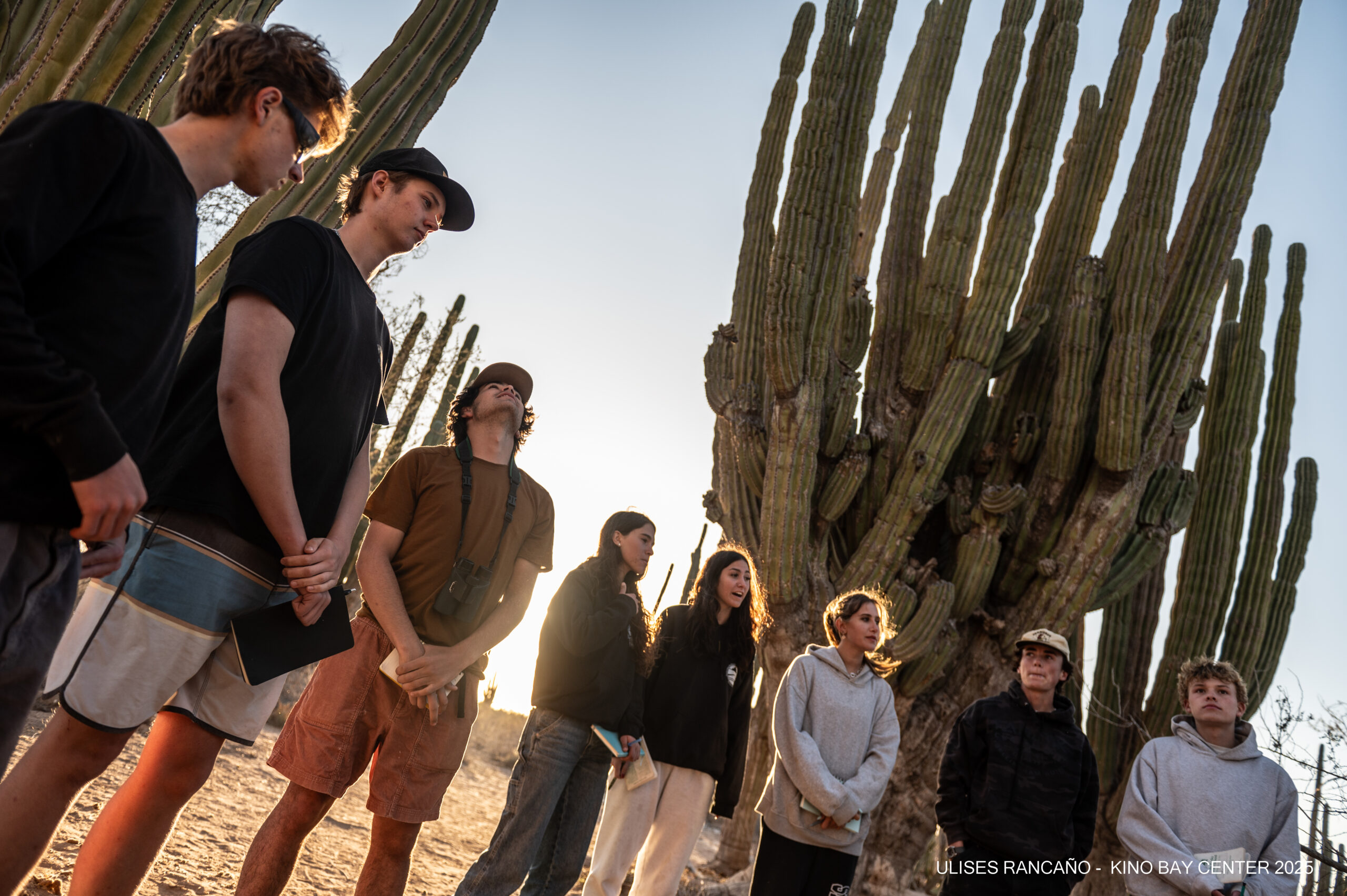
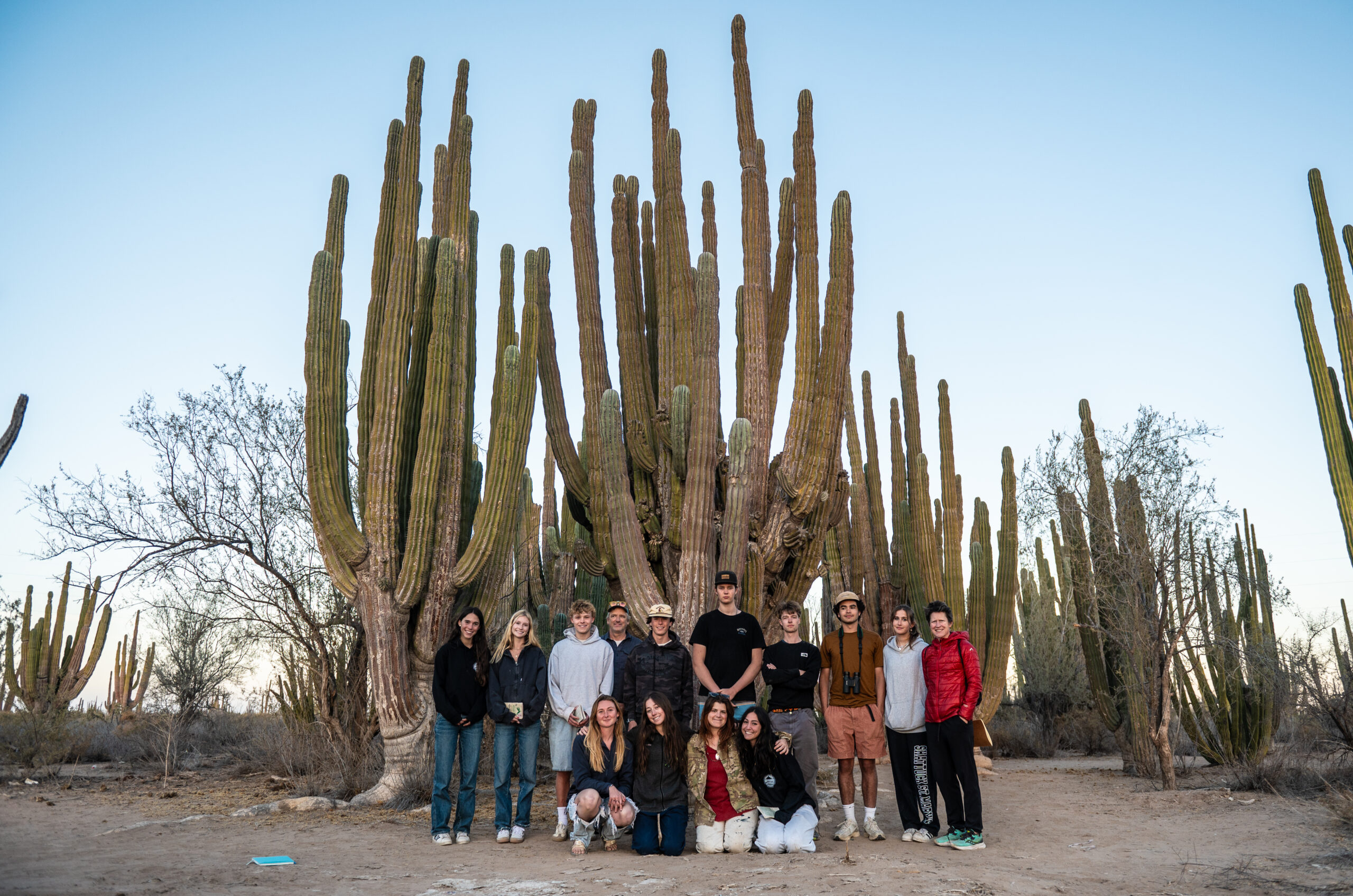
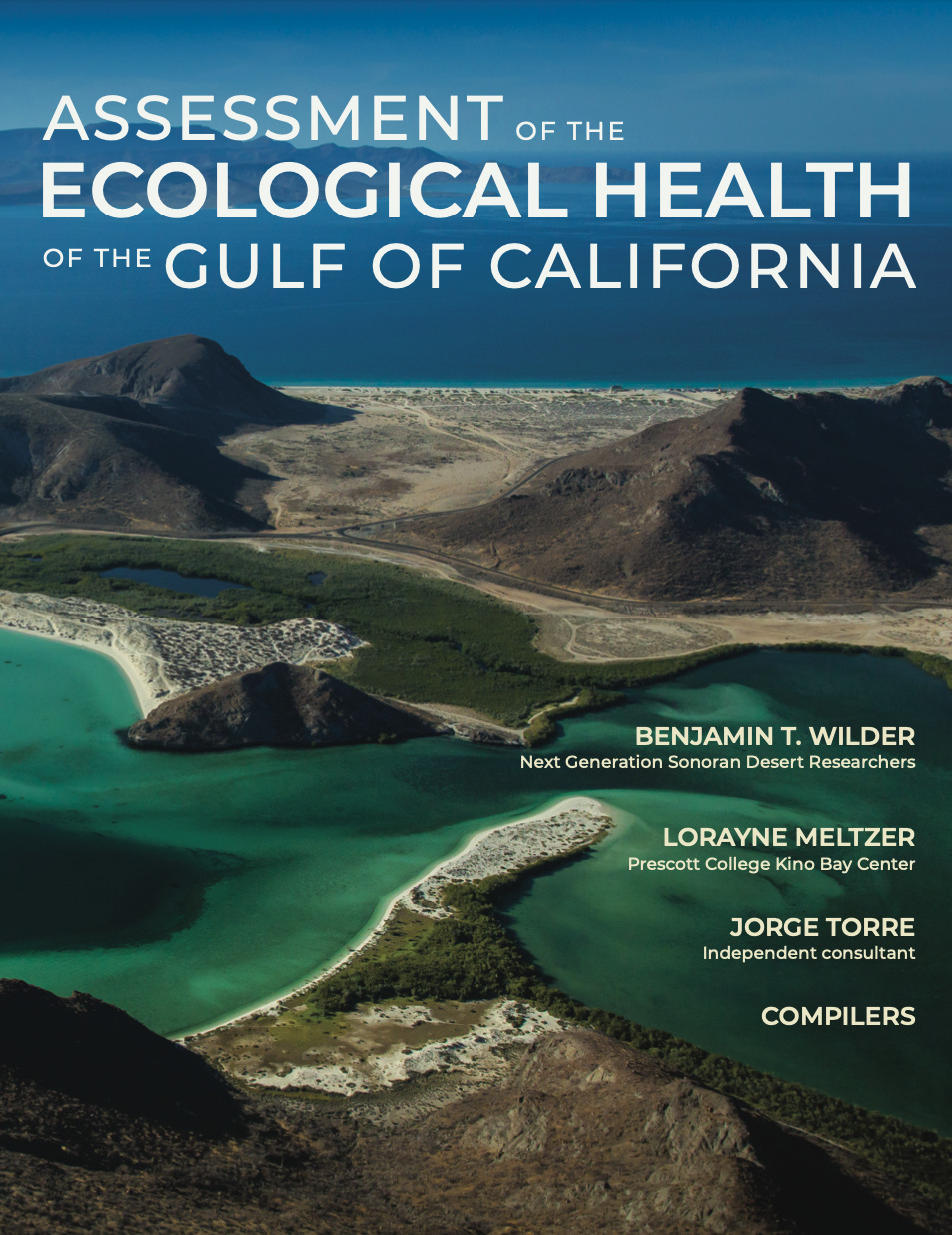
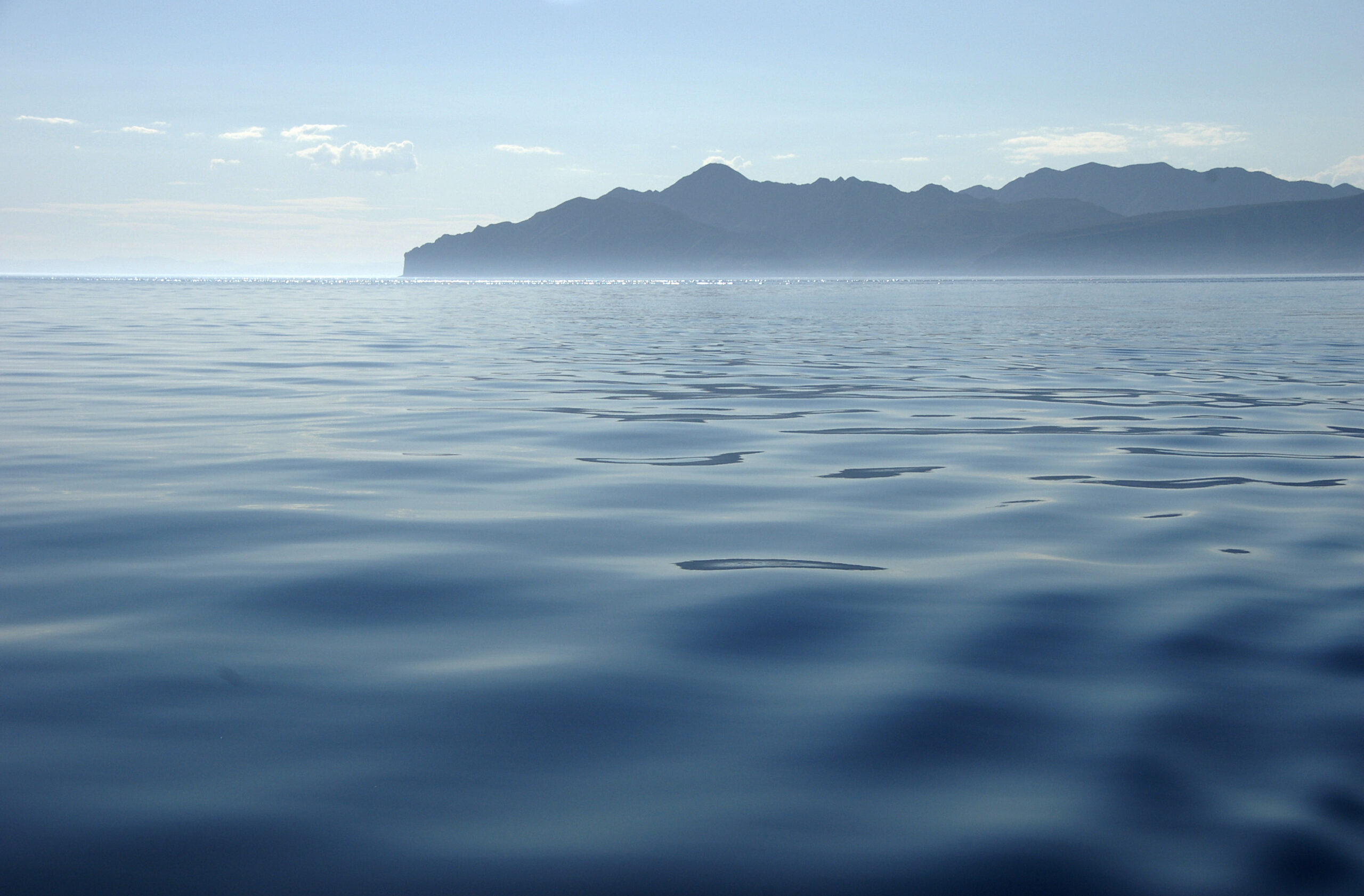
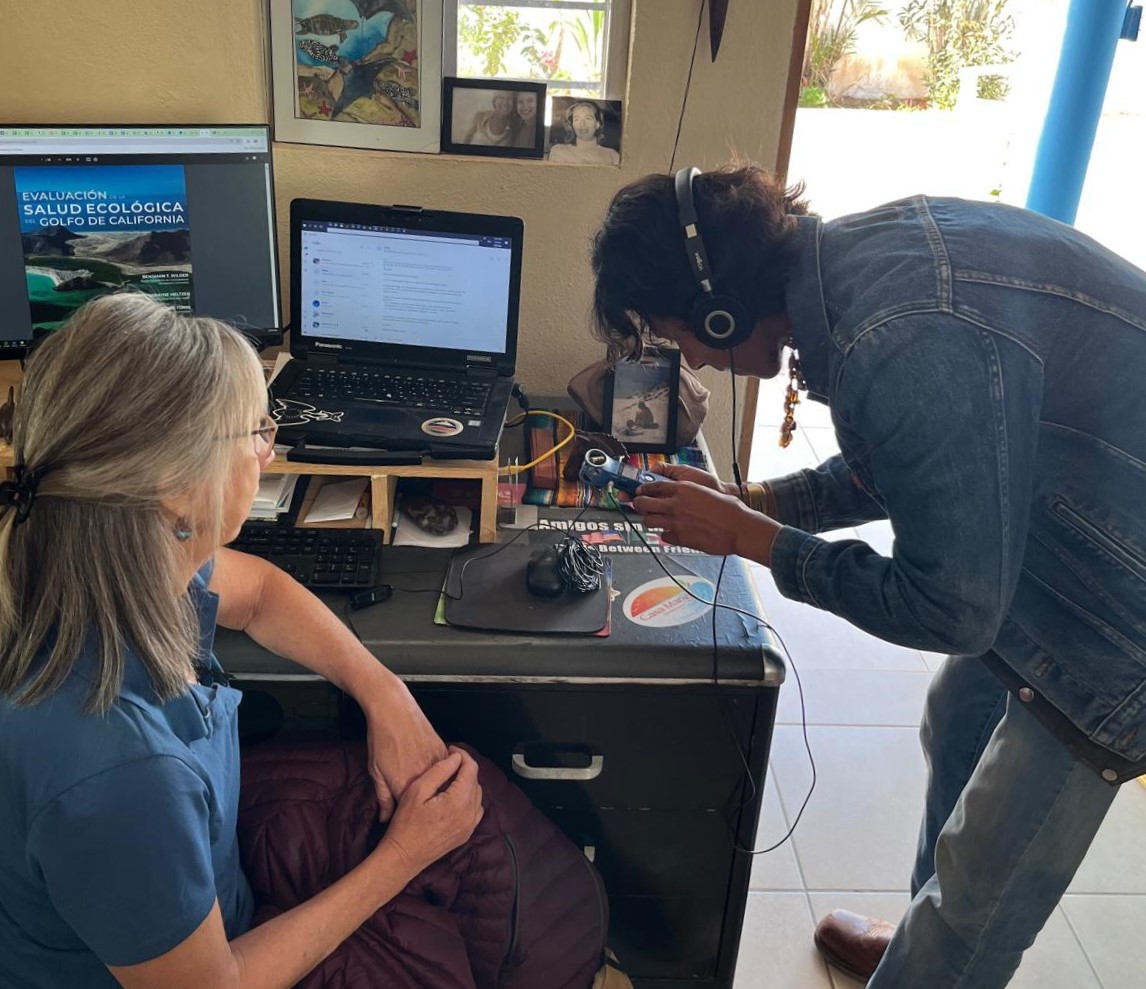
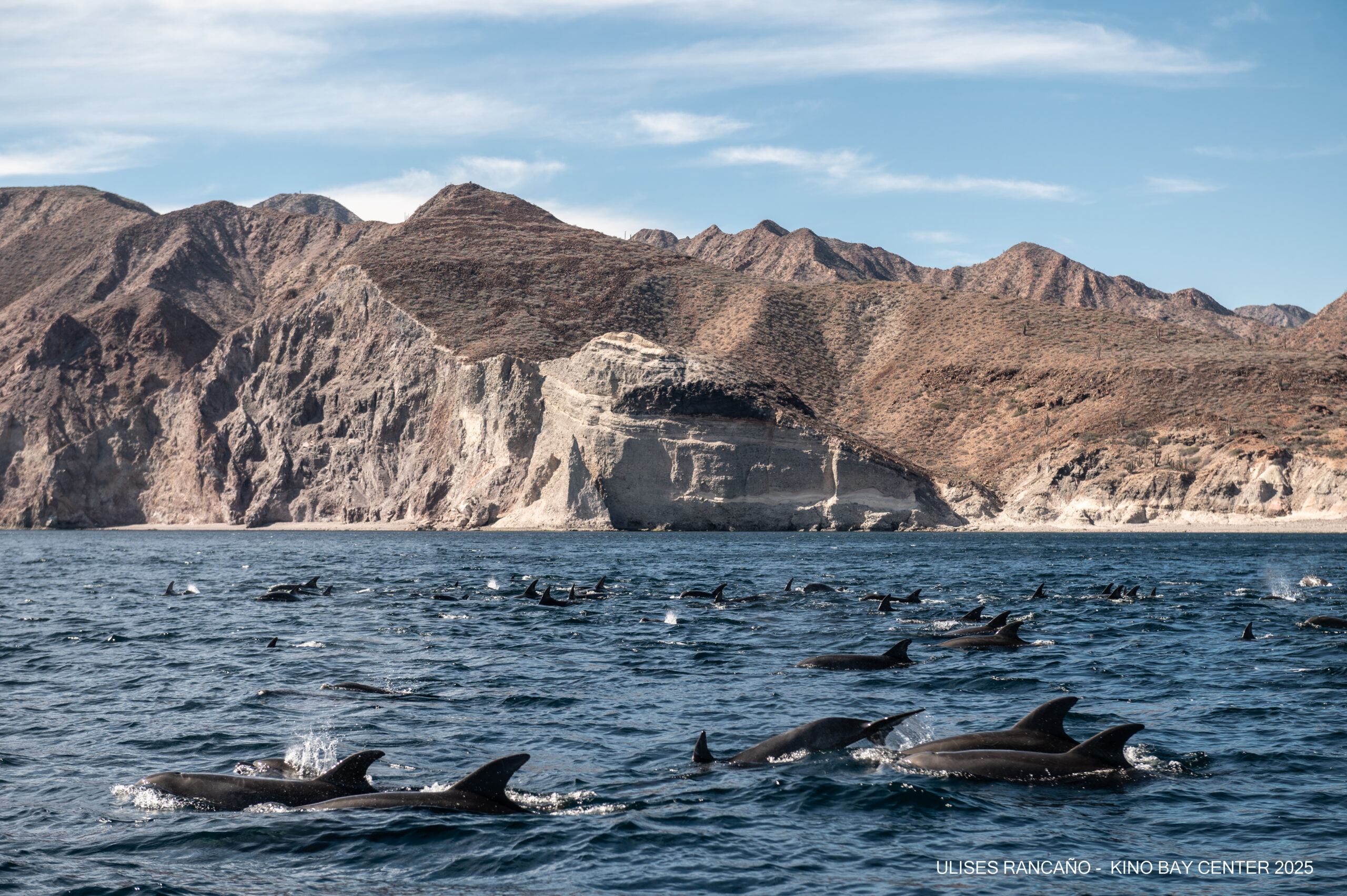
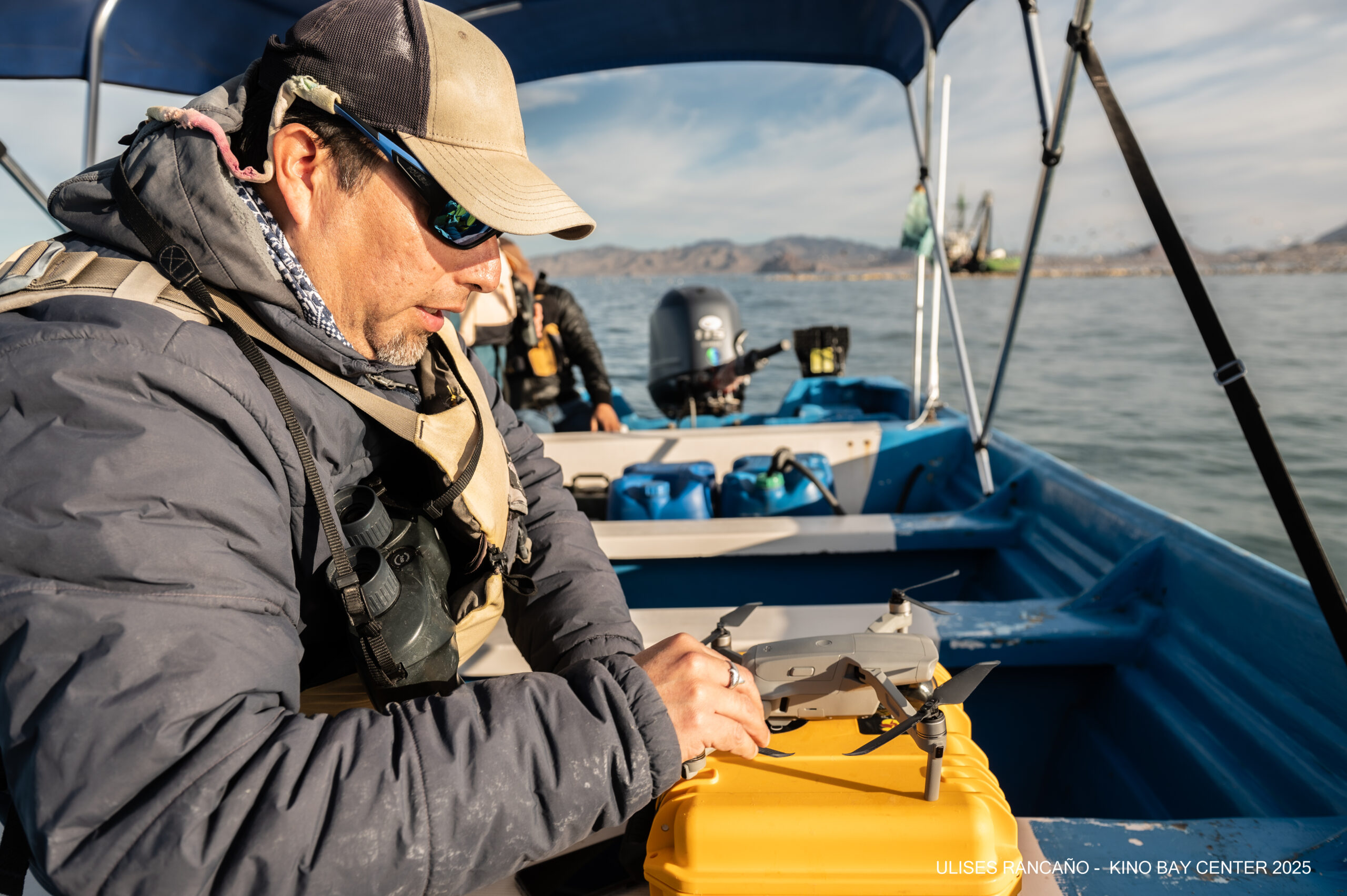
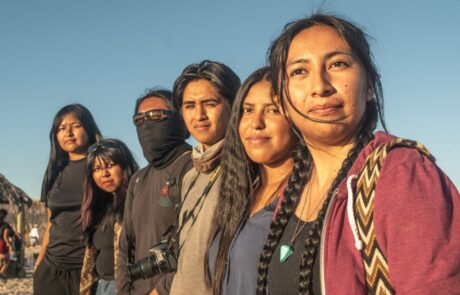
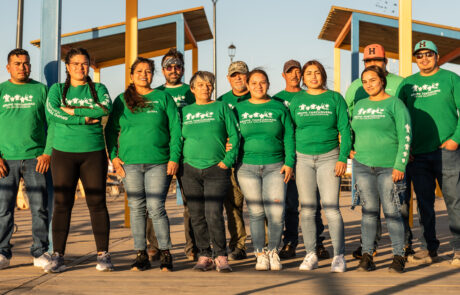
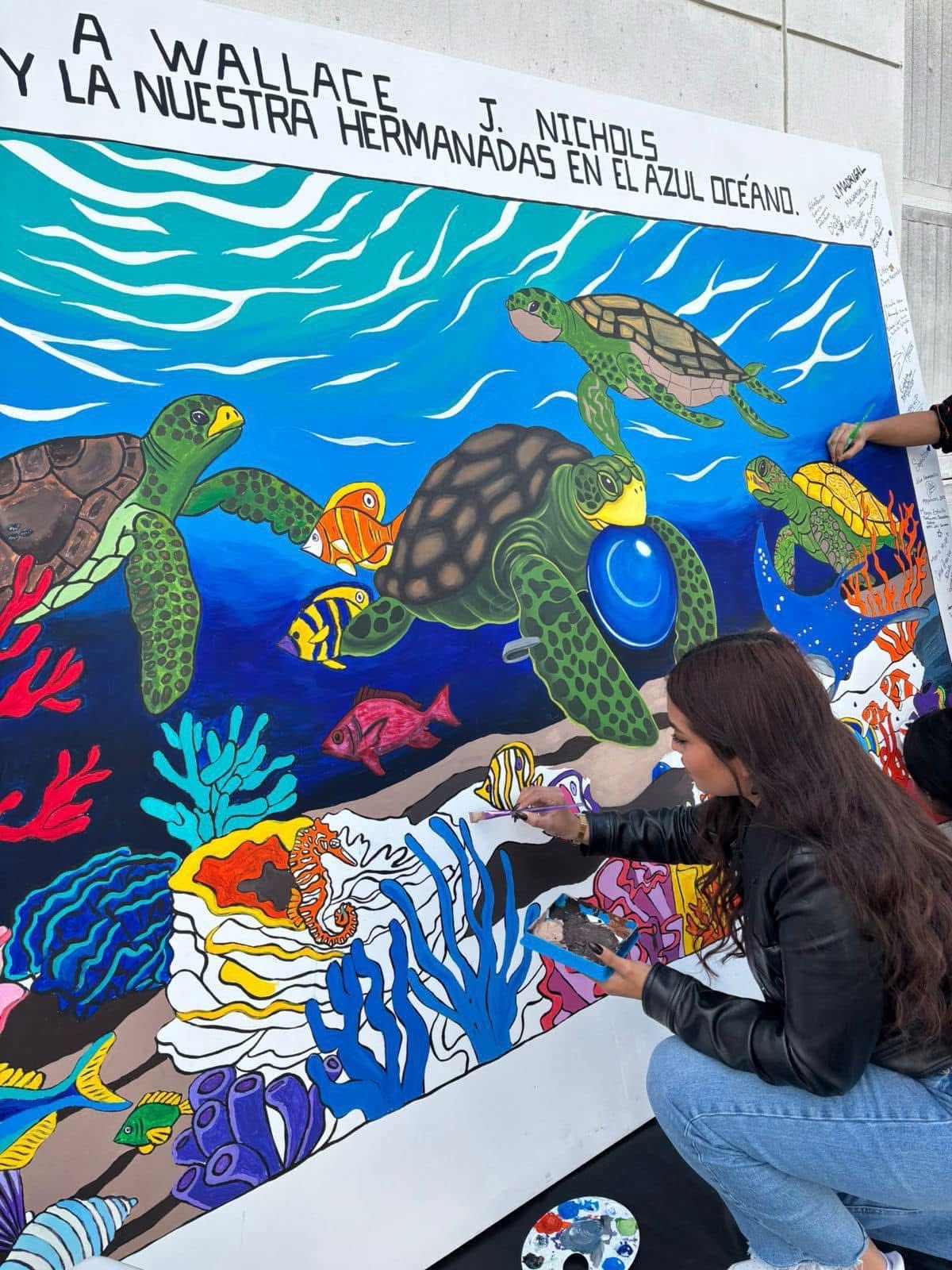
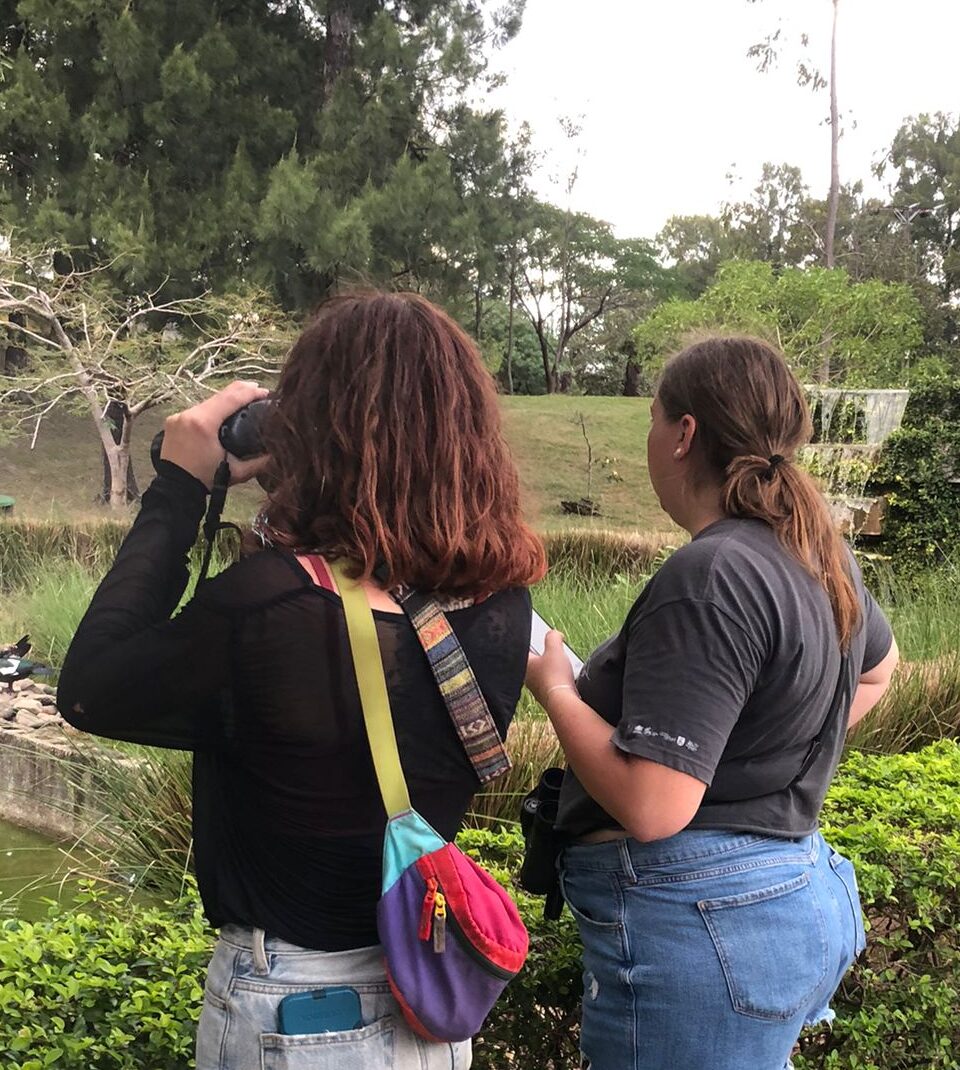
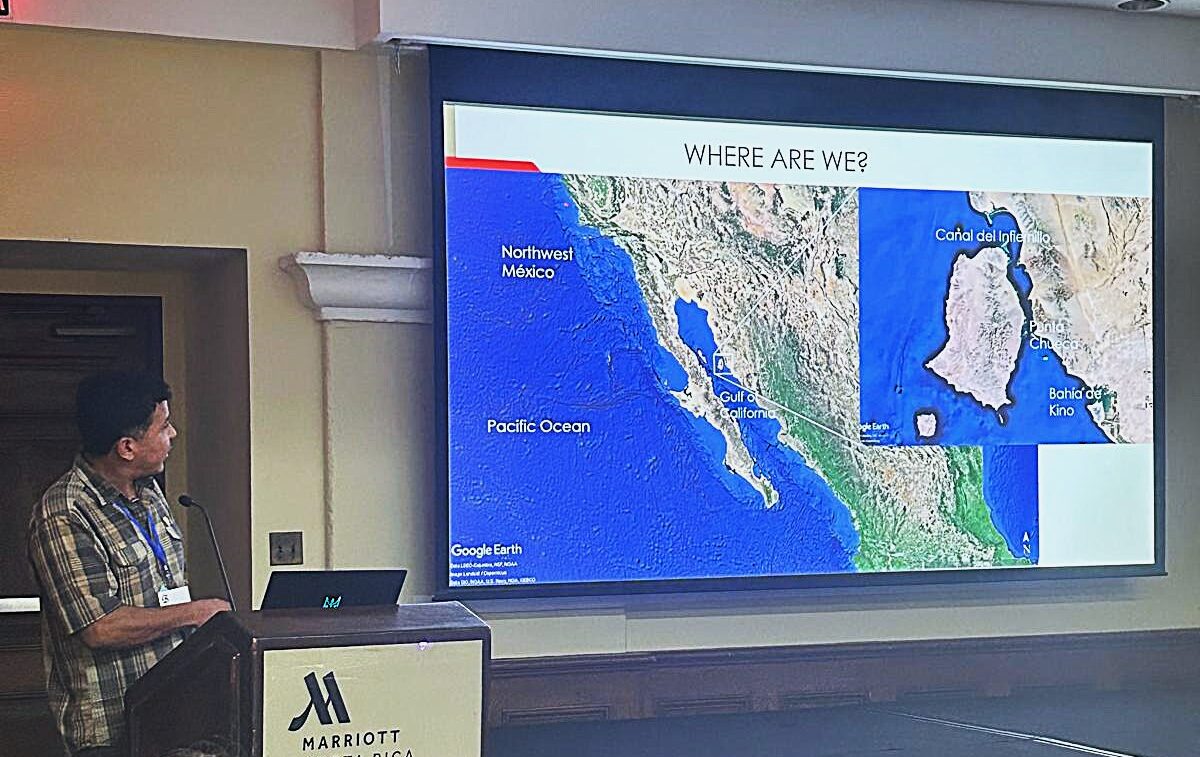 Jaime Martinez presented findings about the importance of connecting indigenous traditional knowledge with science and conservation using a community project ran by the Center, the Coijaac Group, as an example. By learning the meaning of traditional indigenous recognition of ecological concepts and combining it with western ways of knowing, a deeper understanding of the environment, and more specifically birds, is achieved. (Francisco Jaime Martinez Reyes)
Jaime Martinez presented findings about the importance of connecting indigenous traditional knowledge with science and conservation using a community project ran by the Center, the Coijaac Group, as an example. By learning the meaning of traditional indigenous recognition of ecological concepts and combining it with western ways of knowing, a deeper understanding of the environment, and more specifically birds, is achieved. (Francisco Jaime Martinez Reyes)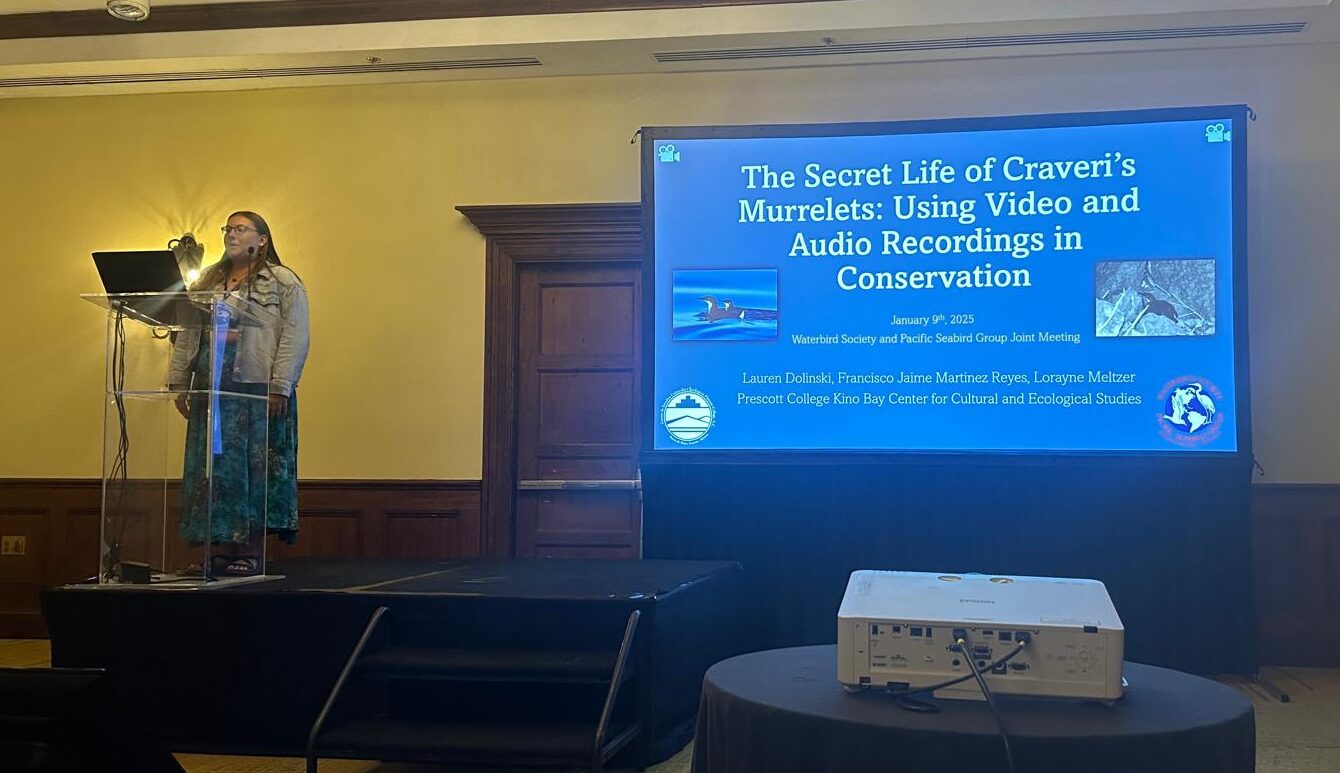
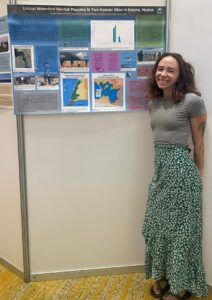 Aly Edwards presented findings regarding the mapping of critical waterbird habitats in Laguna la Cruz and Canal del Infernillo, which are two wetlands internationally recognized by the Ramsar Convention for their ecological importance. By conducting waterbird counts in strategic spots around the two sites and comparing them to the habitat they’re located in, the program was able to more profoundly understand the importance of the conservation of the wetlands. (Alexandra Edwards, Alexander D. George, Anyll Markevich, Lauren Dolinski, Francisco Jaime Martínez Reyes, Lorayne Meltzer)
Aly Edwards presented findings regarding the mapping of critical waterbird habitats in Laguna la Cruz and Canal del Infernillo, which are two wetlands internationally recognized by the Ramsar Convention for their ecological importance. By conducting waterbird counts in strategic spots around the two sites and comparing them to the habitat they’re located in, the program was able to more profoundly understand the importance of the conservation of the wetlands. (Alexandra Edwards, Alexander D. George, Anyll Markevich, Lauren Dolinski, Francisco Jaime Martínez Reyes, Lorayne Meltzer)